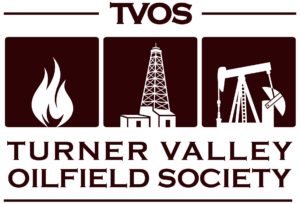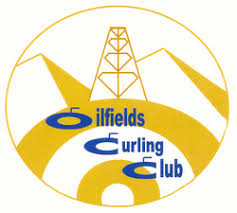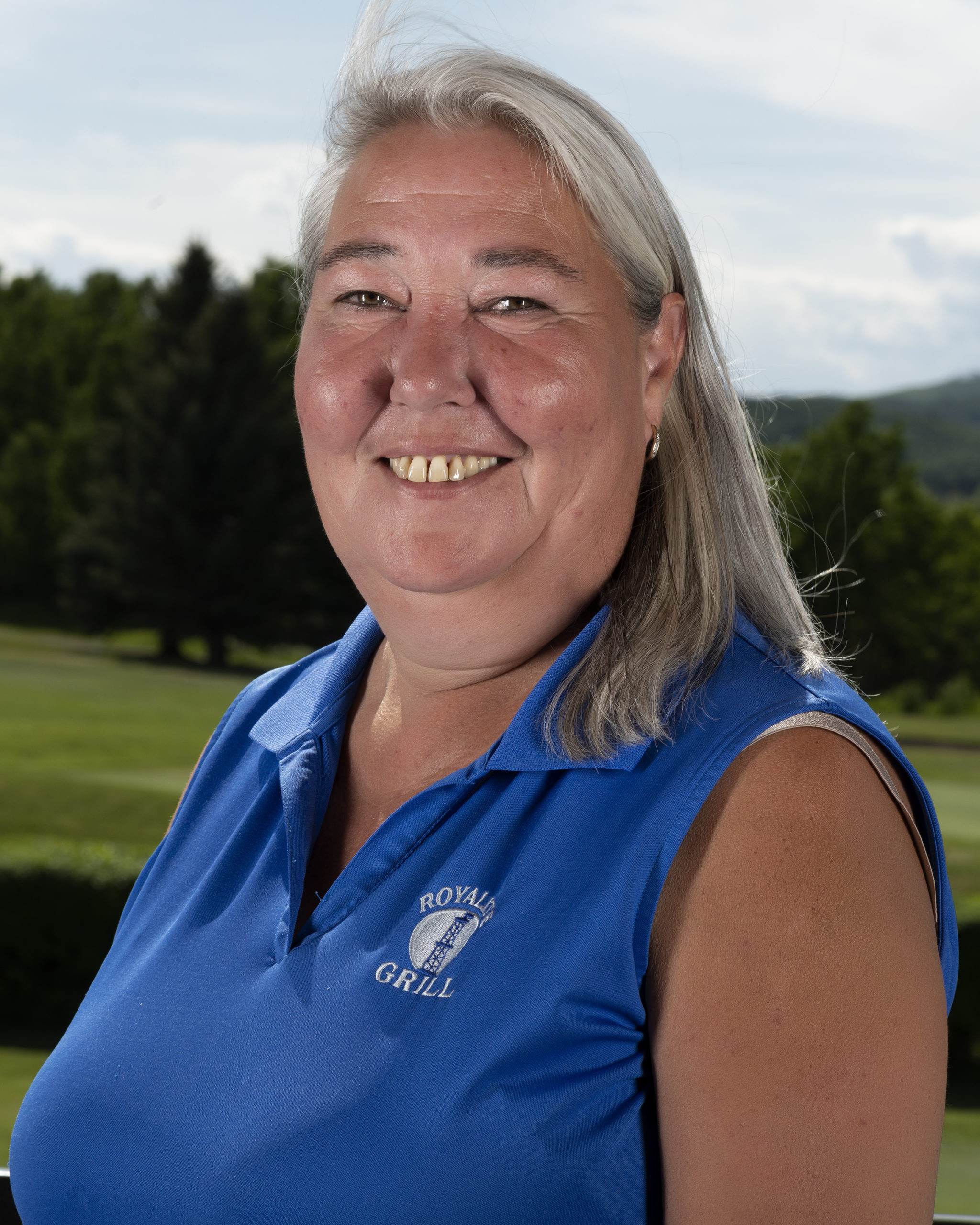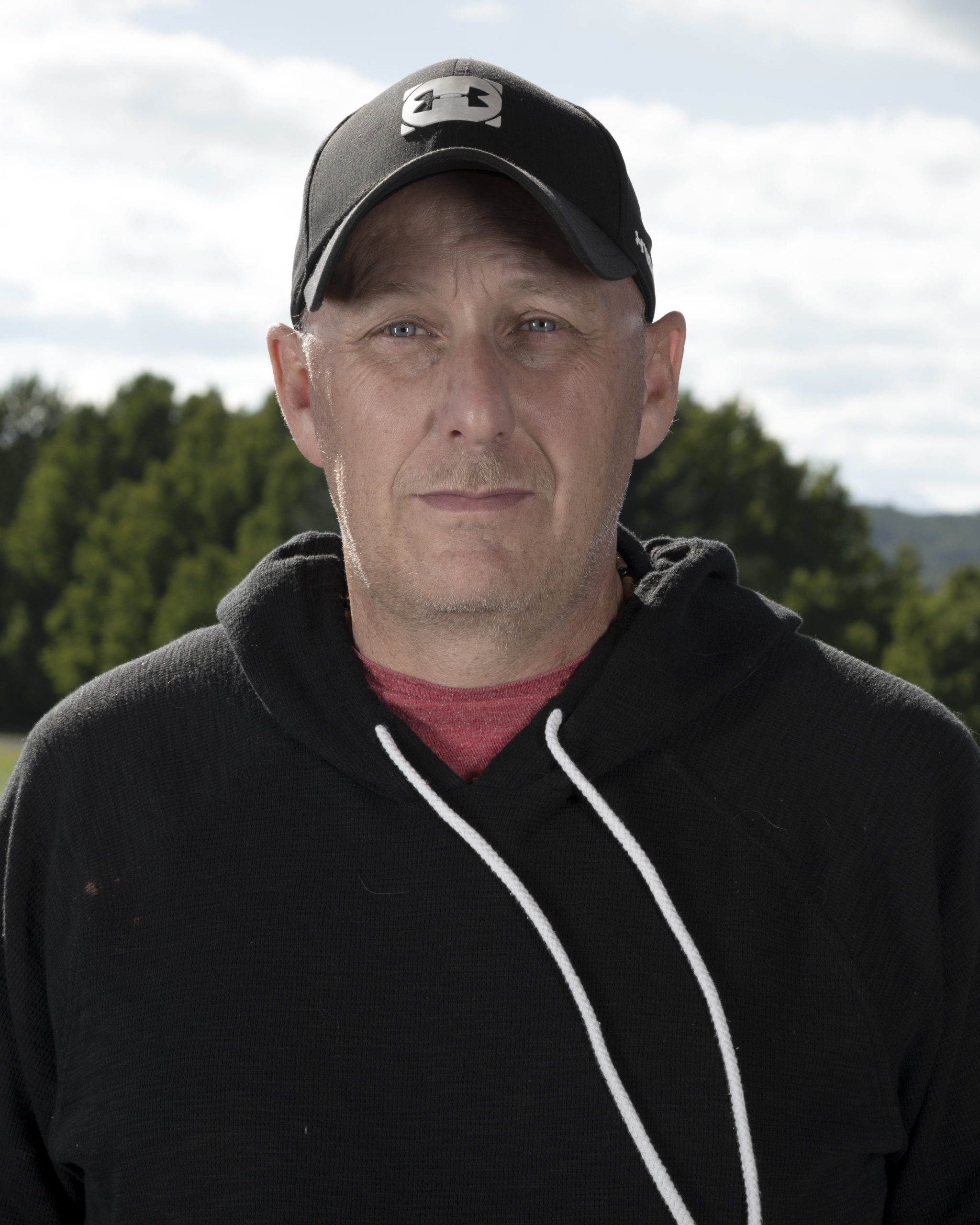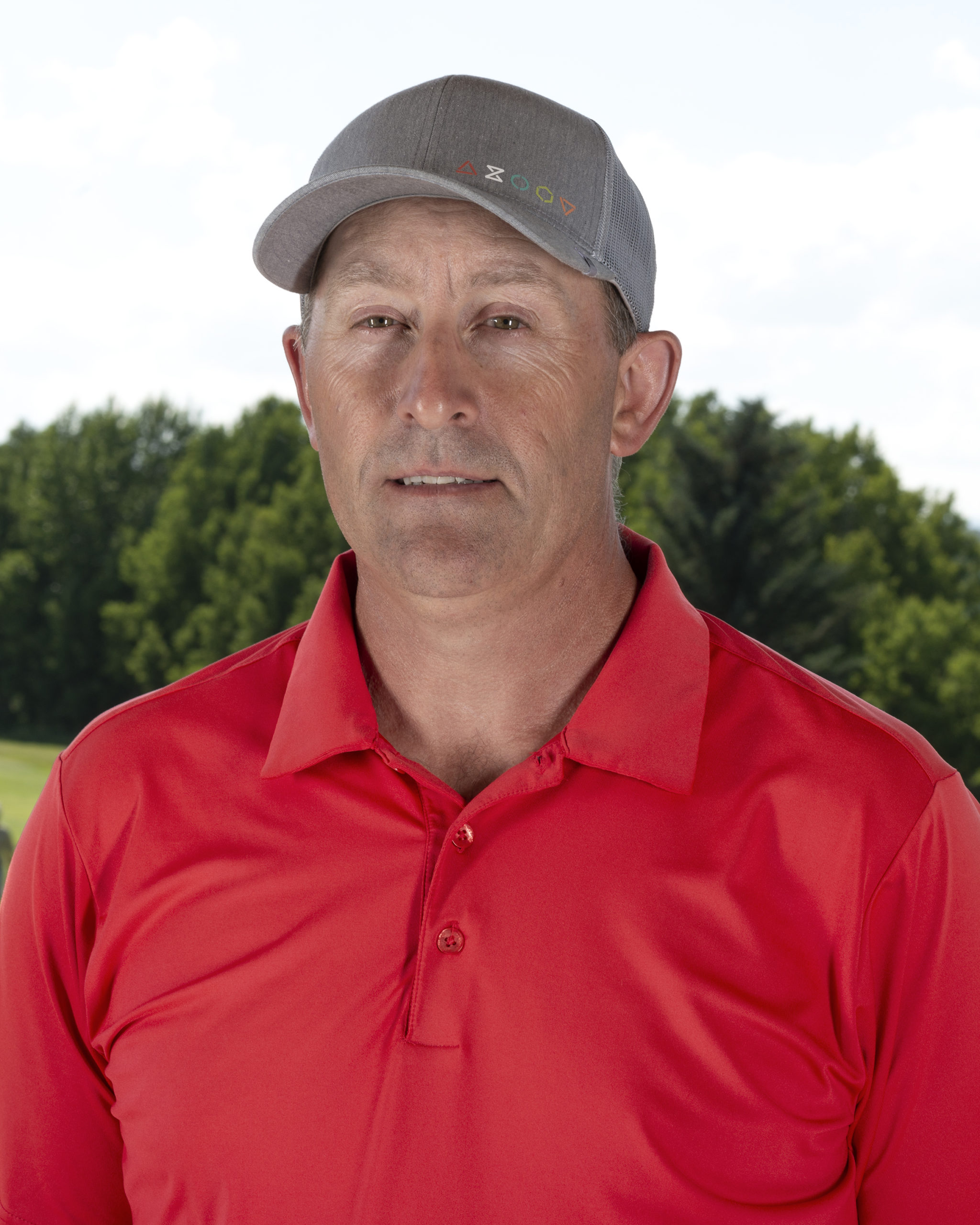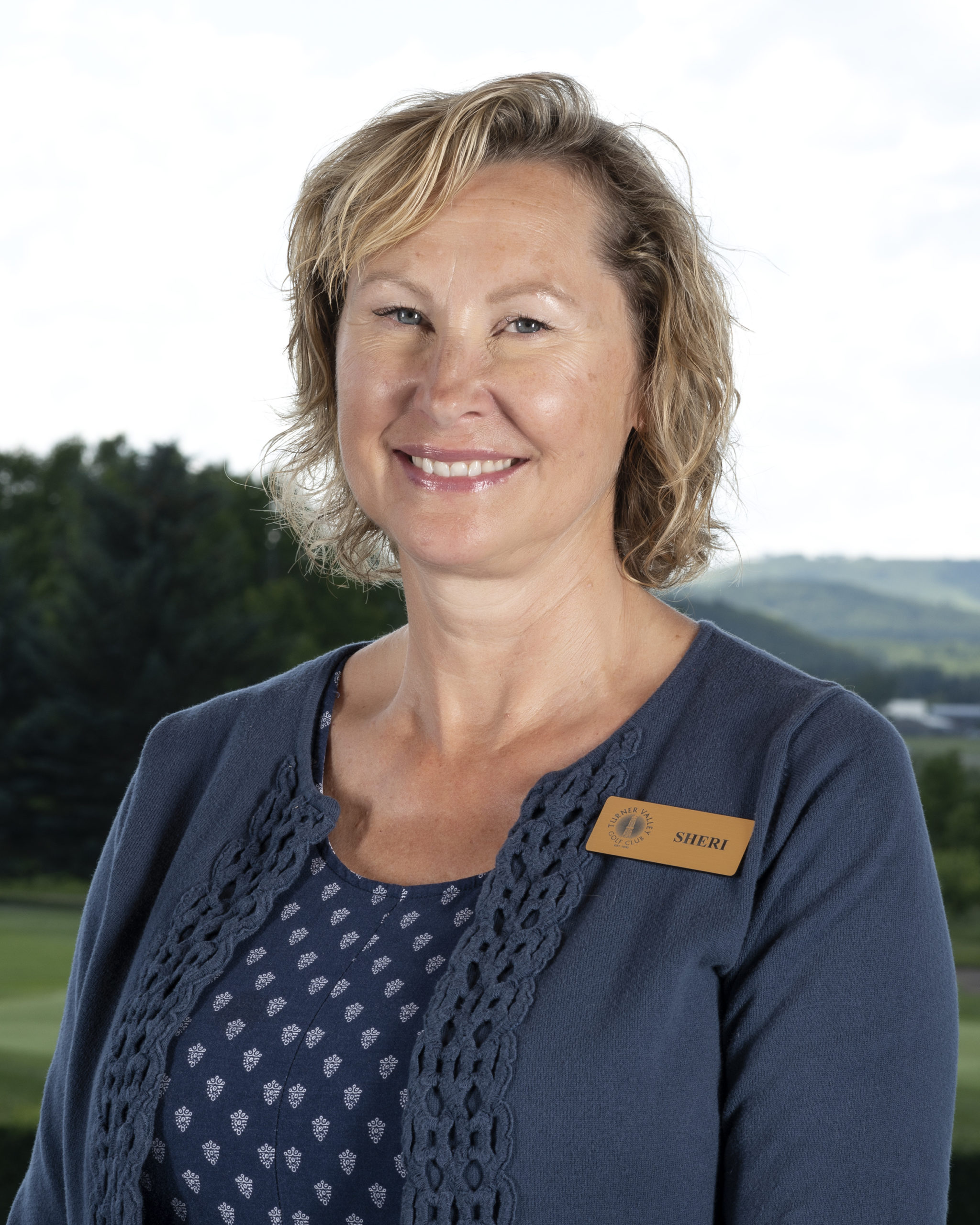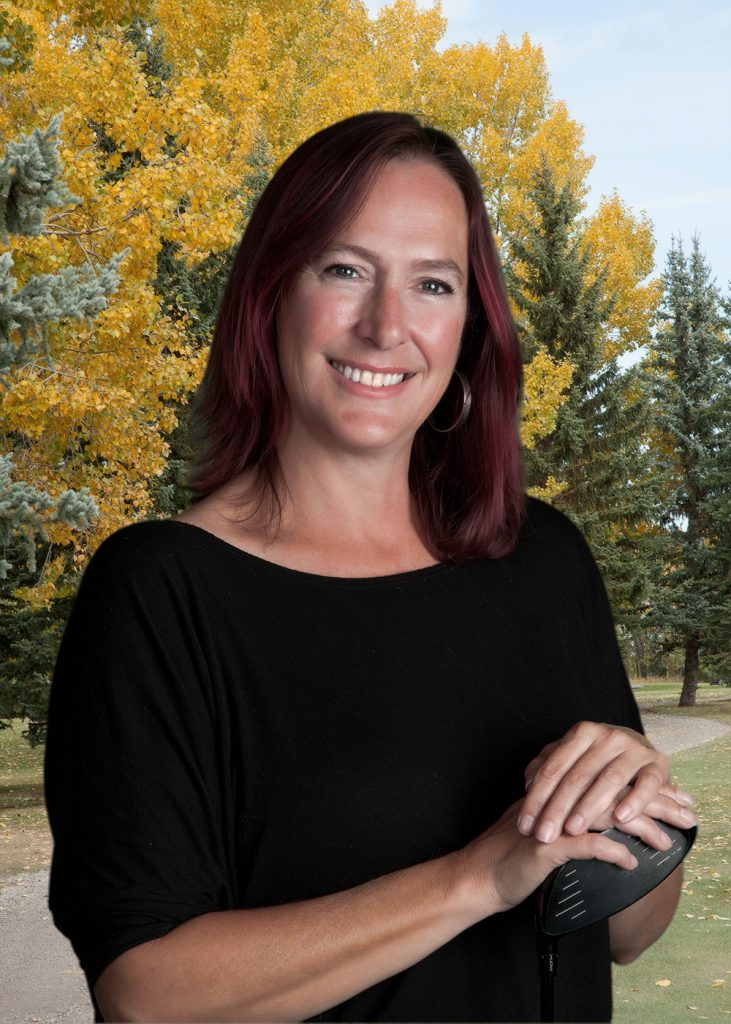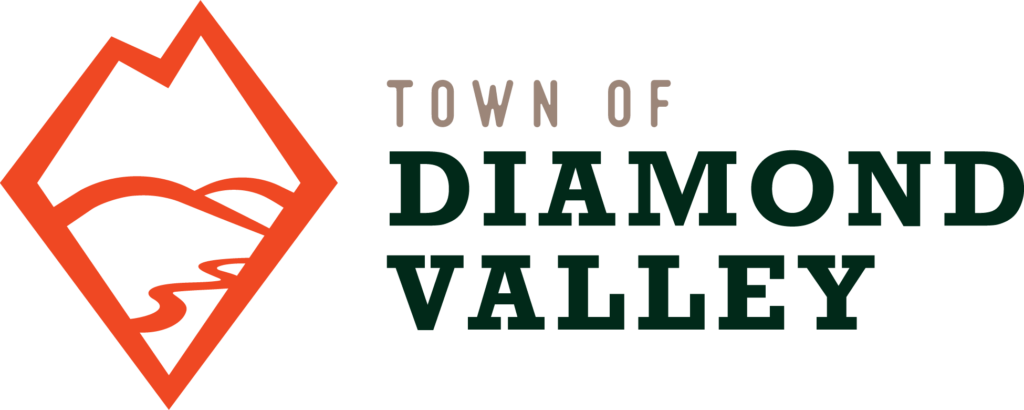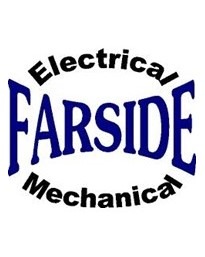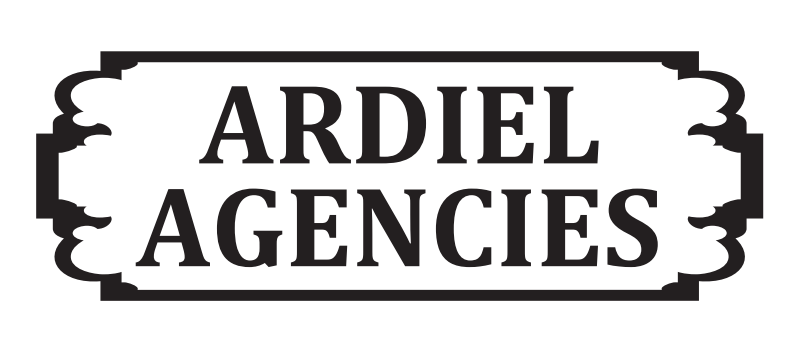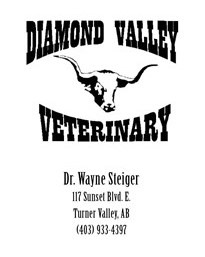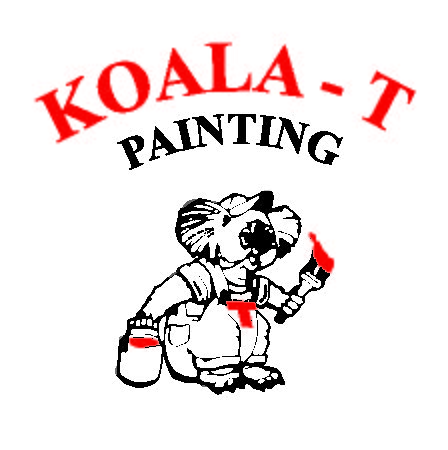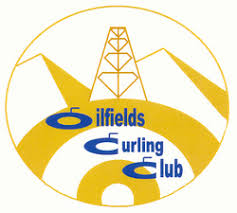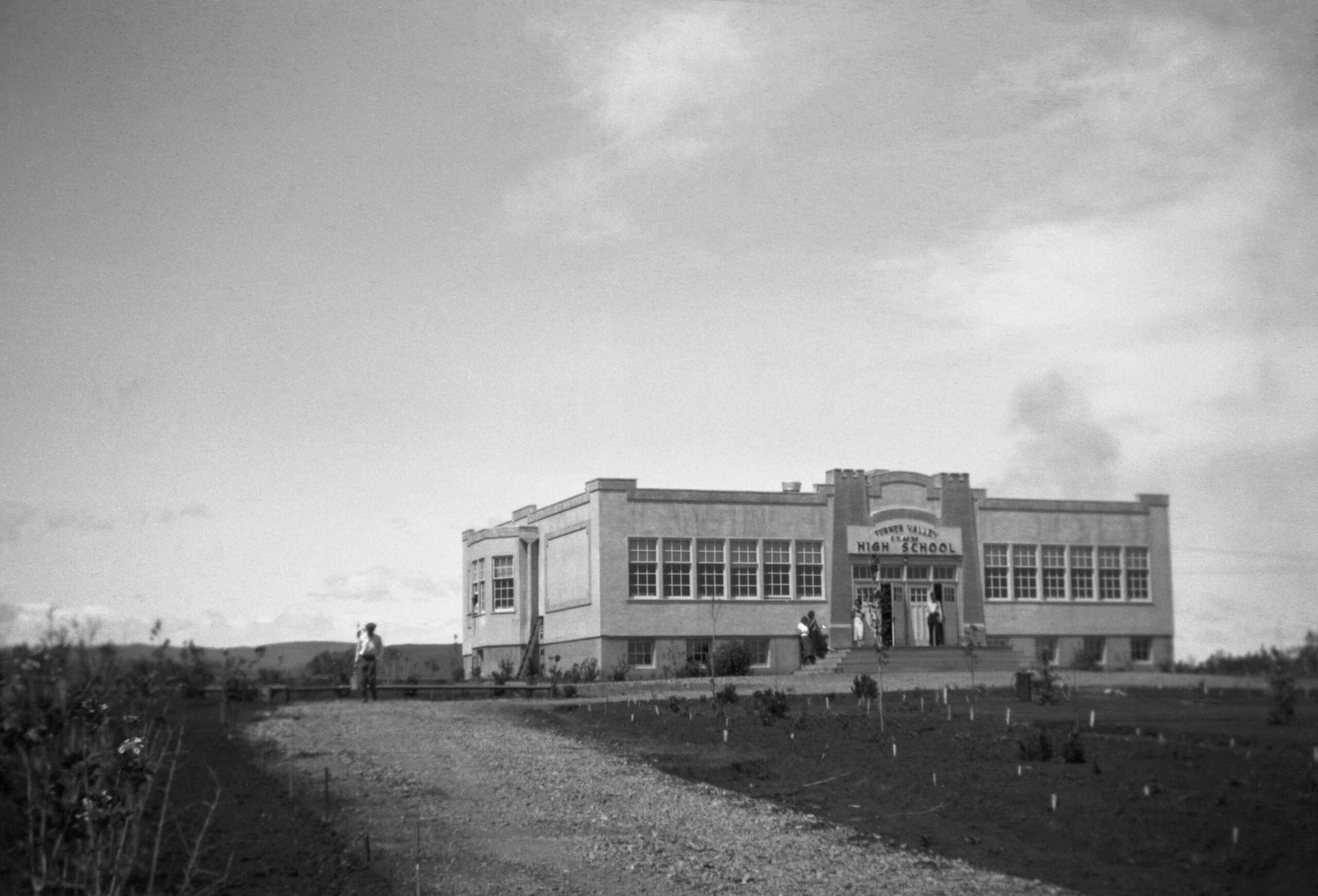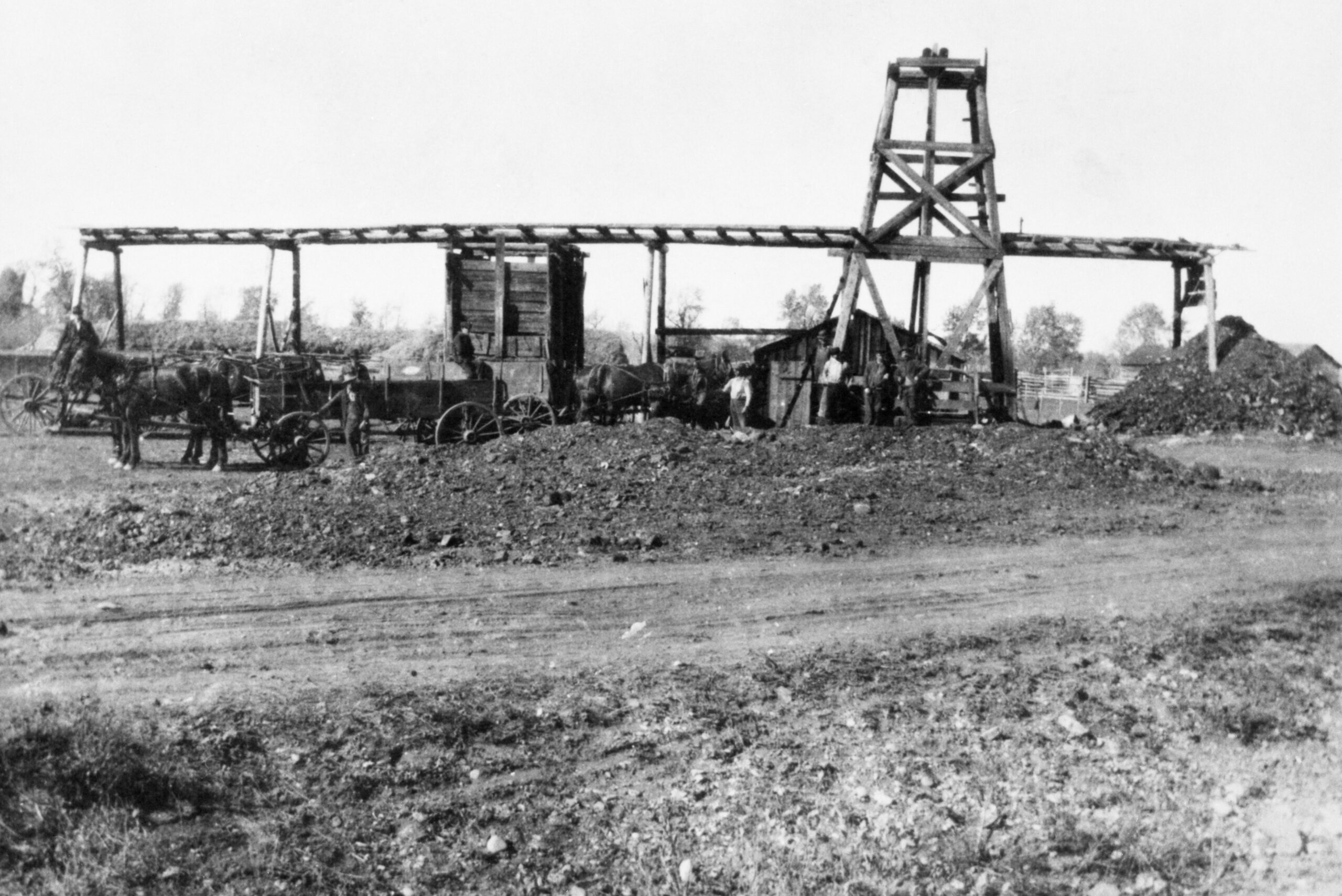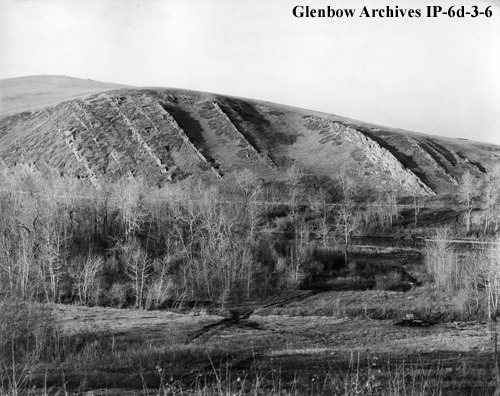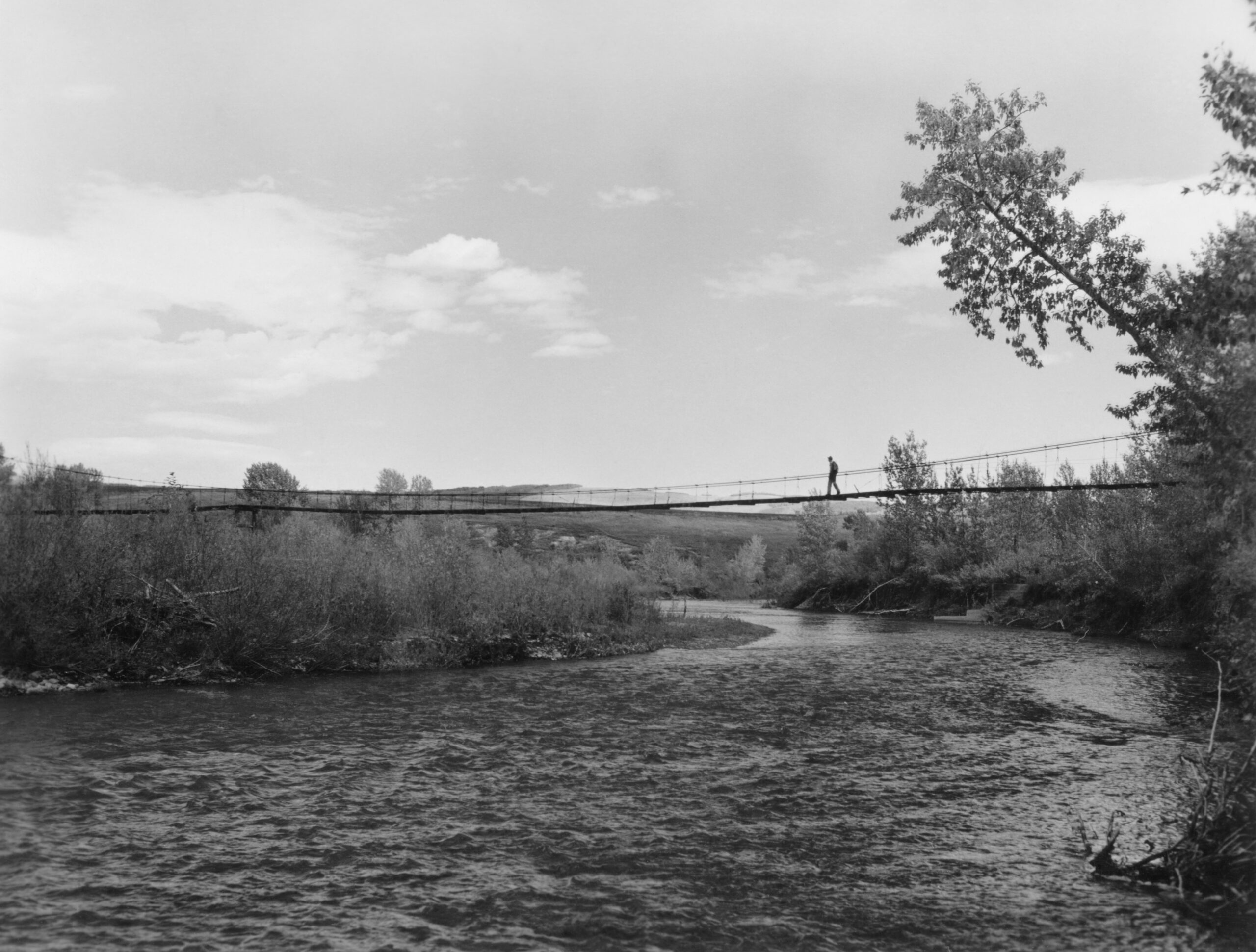About Us
The Turner Valley Golf Club dates back to 1930, when with the help of the Royalite Oil Company, four local residents were able to lay out a 3-hole track with natural grass greens and tin cups for holes.
Originally crafted to help locals and employees get through the tough times of the 1930’s and 1940’s, the club expanded to a 9 hole sand green facility in 1932, and the 18-hole course it is today in 1975. The club initially operated under the name Turner Valley IOLS Golf Club until 1949 when it became the Royalite Golf and Country Club. On August 2nd, 1954 the club officially changed its name to the Turner Valley Golf Club.
The course is characterized by its challenging and tree-lined fairways with small, well-protected greens, all amongst the breathtaking views of the Rocky Mountains. Offering layouts that span 4,100 to 6,800 yards via six tee options, the Turner Valley Golf Club has been delighting golfers for over 90 years.
With a full-service clubhouse and driving range, it’s not just the views at our club that are spectacular. From your opening tee shot to your apres experience at the Royalite Grill, we aim to ensure your day with the game you love is relaxing and enjoyable!
The Turner Valley Golf Club is proud to be a certified member of Audubon International, dedicated to the sustainable management of land, water, and wildlife on and off the course.
Community Partners
- Town of Diamond Valley
- Turner Valley Oilfield Society
- Oilfields Curling Club
At Turner Valley Golf Club, we’re here to make your golf or dining experience enjoyable!
If you have any questions or concerns, please use our staff list to direct your inquiry to the proper person.
For general inquiries, please contact the pro shop.
Thanks for looking to connect with us at the Turner Valley Golf Club!
Turner Valley Golf Club Staff Directory
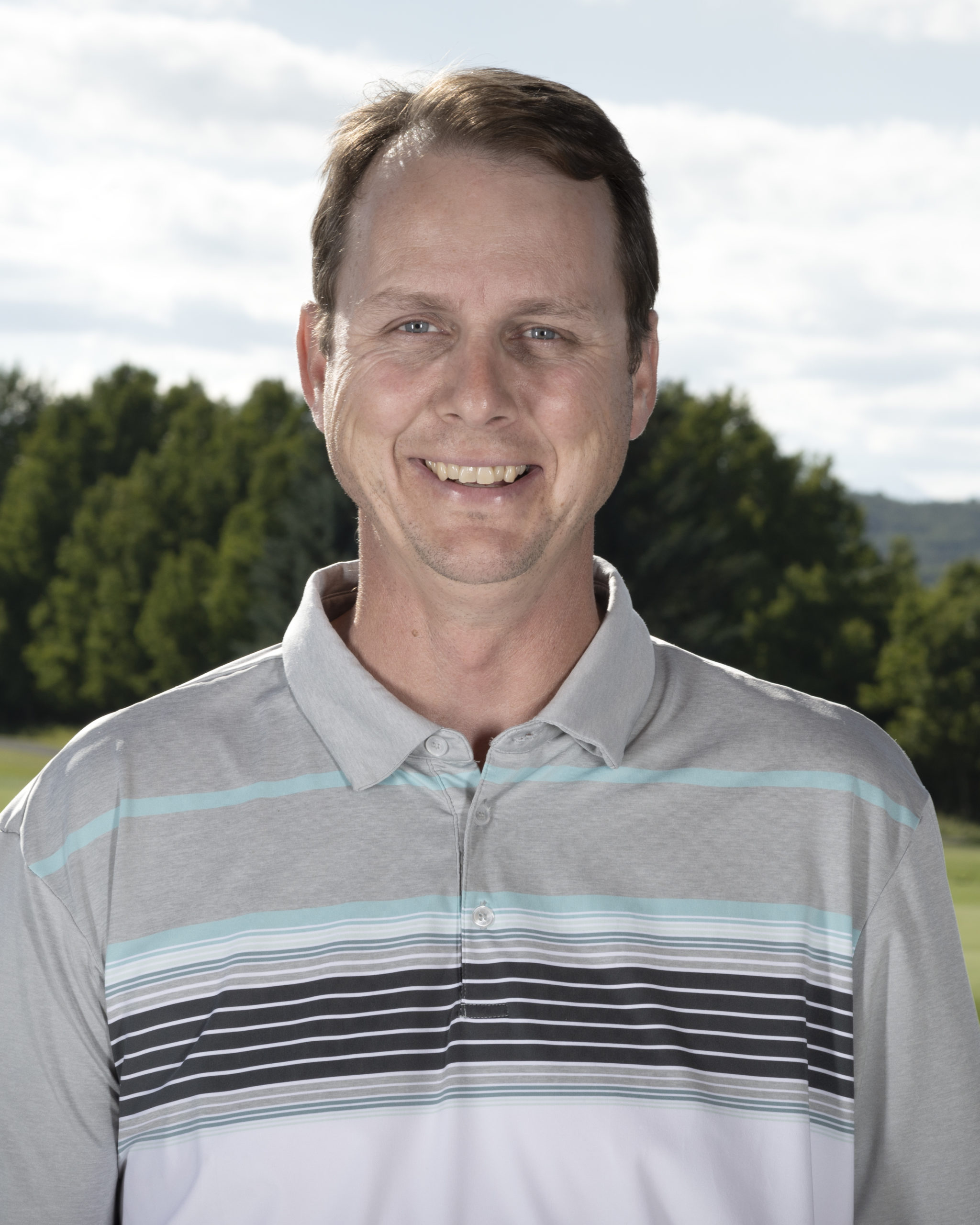
Cory Seaman
General Manager / Executive Professional
PGA of Canada
Phone: 403-933-4721 ext. 221
cseaman@turnervalleygolf.com

Mike Fenske
Class A Golf Professional
PGA of Canada
Phone: 403-933-4721 ext 223
mfenske@turnervalleygolf.com
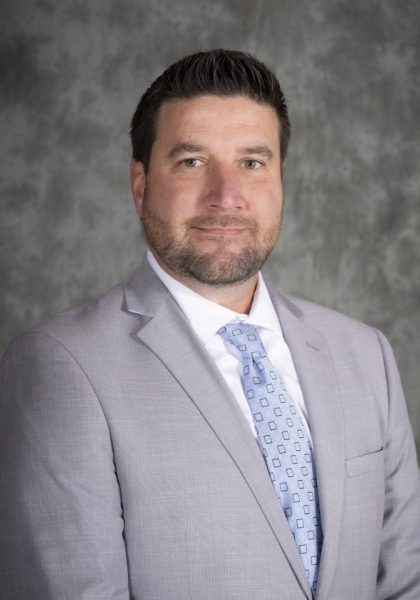
Cameron Latimer
Head Golf Professional
PGA of Canada
Phone: 403-933-4721 ext. 221
clatimer@turnervalleygolf.com
Our Story
The following information has been taken from 'Ron's Ramblings' a living historical document researched and written by Ron McLaren, a long-time member, board member and past president of the club.
The Evolution
Grounds
The Old Course
The Expansion to 18 Holes
Course Upgrades
The History of The Clubhouse
The Organization
Day-to-Day Operations
League Clubs
Competitions, Tournaments and Trophies
Golf Club Groups
The People of TVGC
The Evolution
- Late ‘20s: Turner Valley was in an oil boom.
- 1930: Fred Cameron, Harold McLeod, Dr. George Hall and Jack Keith convinced the Royalite Oil Company to donate land for the development of the Turner Valley IOLS Golf Club (Imperial Oil Leisure Society).
- Land was donated and they laid out and built a three-hole track with natural grass greens with tin cups for holes.
- The course soon became popular and developed into a 9-hole course.
- 1932: The annual membership fee was $2.50.
- Club members and committee members voluntarily maintained the course.
- 1934: Alice Keith was the first recorded champion at the Club. After winning for three straight years (1934-1936) they gave her the trophy to keep.
- 1935: annual fees were $7 for men and $4 for women. Green fees were $0.25 for residents and $0.50 for non-residents.
- 1935: the first golf tournament of the Foothills Golf Association was held at our golf course on Sept. 1 and 2. Ted Wellman of Blackie won the Men’s Championship flight. Mrs. Northwood of Stavely won the ladies side with Mrs. Keith of Turner Valley finishing runner-up.
- 1938: Total receipts for the year were $695.
- 1938: A decision was made that members could only join in voted in by the executive.
- 1938: Alice Keith became the first woman on the executive
- 1938: May 9 the Club joined the Alberta Golf Association.
- 1944: Aug. 11 a tennis court was opened.
- 1946: The Club applied for and received a beer licence.
- 1947: Dues were raised by $1 per member and a drive for new members initiated which required a $10 payment in advance to increase revenues.
- 1949: The Club was officially renamed to the Royalite Golf and Country Club.
- 1949: Budgets were in the $4,000 range.
- 1949: Fees were $10 per year.
- 1954: Aug. 2 the name of the Club was officially changed to the Turner Valley Golf and Country Club and funding through the Royalite Oil Company was reduced.
- 1955: The Club registered under the Societies Act of Alberta.
- 1955: The Club had 66 family memberships, 138 adult memberships and 33 junior memberships.
- 1955: The first Junior Club was established.
- 1958: Cliff Moore raised the idea of an 18-hole golf course.
- 1959: Bill Harding, long time serving club steward, resigned.
- 1960: Joe Furlong donated, built and erected an entrance archway to the clubhouse. It was later moved to the new clubhouse and remained for several years.
- 60s: The Club started to purchase land from Okalta Oils, which owned much of the land the golf course was built on. Land purchases would continue for years to come.
- 1962: Turner Valley High school, located bordering on the Club, was being relocated to Black Diamond. The Board of Directors for the Club purchased the land and building for $1,200 and began making plans to renovate it for use as the Clubs new clubhouse.
- 1963: The directors were authorized to borrow up to $25,000 and the renovations began.
- 1964: In March the new clubhouse opened at a final cost of $28,000.
- 1974: The clubhouse began expansion plans to include a pro shop, expanded locker area and a Members Lounge.
- 1977: Designed by Tom Brown with Roy Wade coordinating the construction for the clubhouse expansion officially opened for the 1977 season at a cost of approximately $30,000.
- 1986: Parts of the course and some of the fringe areas were on leased land. These were identified, assessed, and the purchase of the Van Loon property was made to ensure the Club controlled its land and its future.
- 1987: The driving range was completed and opened.
- ‘90s: A new Maintenance Facility was built.
- 1996: The presence of a Buffalo Kill and processing area was discovered on our property. This dates back between 2,000 and 3,000 years. Many artifacts were discovered including Bison bones and arrowheads.
- 2001: A renovation that included adding the board room and the upstairs offices on the southeast corner of the building.
- 2013: Added the deck area off of the main lounge facing west.
Grounds
- The grounds were much different than we have today.
- Initially the majority of the areas were grass, trees and flowers.
- The south parking lot did not exist. That area was a tee box for #1 and the first putting green was also located there.
- The main parking lot extended west where the power carts are now marshalled.
- The majority of the grounds south and west of the clubhouse were a yard with a swing set, etc. located on the west lawn.
- North of the clubhouse was an area for member power carts.
- The area where the cart building now exists was an overflow parking area.
- The east lawn has changed the least. It has always been a barbeque, picnic area.
- There was an out building over near what is now the maintenance building. It had been a shop facility for the school but in its golf course time was used for storage.
The Old Course
Tee boxes were boxed shaped cement pads with mats for lefties and righties as well as a rubberized area in the middle where the tee could be placed.
The course had sand greens with an oil-based product added to it. Players had to smooth the surface during play using coconut mats originally and later a round bar with a handle.
You hit off natural grass fairways, they were not irrigated.
Rough was uncut grass.
The course had fewer trees in the playing area.
Very few hazards or sand traps were in play. There was no money to put in water hazards nor maintain them.
Natural pond on #14 was the only water hazard.
There was a few green side bunkers which were maintained by players.
Metal cups used as holes.
The 9-hole course measured 2650 yards and played to a par 34 for the men and 37 for the ladies.
From the Clubhouse you walked past the practice sand green, then down a small hill to the west to arrive at the first tee. On busy days you put a ball in the 'tube,' and when your ball rolled to the front, it was your group’s time to tee.
Hole #1
Name: ????? (Re-Named "Home Again" for short period when it became #9)
Par 4: 228 yards
Handicap: 6
Located near the north end of the current #9 water hazard. Began uphill then followed the current 9th fairway to a green that was located approximately where the fairway now makes its final turn. To the east was the Turner Valley High School (current clubhouse).
Hole #2
Name: Riverview
Par 3: 190 yards (Shortened to 166 yards when the Club moved to a new clubhouse)
Handicap: 8
This hole went down into the valley. Then, as today, this was the 'signature hole.' The tee box was located north and a little west of the current 18th green. It angled north/east just short of what is now the 10th green. When the current clubhouse was opened this became hole #1 and the tee box moved to its current location near the entrance to the clubhouse.
Hole #3
Name: Mountainview
Par 4 men / 5 ladies: 385 yards
Handicap: 2
It is as evident today as to how this hole got its name. The view of the Rockies to the west is as magnificent today as it was then. This hole was the first par 4 (par 5 for ladies). The tee box was where the 11th tee is now. The fairway was different with the players going down the right side bringing the right trees much more into play than they are today. The green was located approximately 90 yards from the existing 11th green, where you can still see the path that headed to #4 (now #12).
Hole #4
Name: Plateau
Par 4: 273 yards
Handicap: 4
The tee box was near the existing 12th tee box with the teeing area in the hill. This was truly a risk/reward hole with the longer hitters going over the corner of the trees and shorter hitters going left making the hole longer. The green existed just short of where the current 12th green is today. Once you completed hole 4, there came the long walk up the hill, just as we have today.
Hole #5
Name: Hill
Par 4: 303 yards
Handicap: 5
The teeing area was further back from where the back tee box is on #13 today. The green was located close to where it is today. For the long hitters this could be reached with a long drive (remember clubs and balls were not what they are today) but a miss to the right, put you down the hill, where as today, you were very unlikely to find your ball. Often the play was an iron and a short chip and run onto the green.
Hole #6
Name: Lighthouse
Par 4: 282 yards
Handicap: 7
This hole originated where the back tee for #14 is today angling southwest to a green short of the road and near the edge of the hill to the west. The name was a bit of a misnomer as it was a water tower, not a lighthouse, which existed west of the tee box overlooking the Gas Plant and the Town of Turner Valley. I do understand, however, that during the Second World War there was a light/beacon located in that area overlooking the Turner Valley Gas Plant due to the importance of the plant in the war effort.
Hole #7
Name: Sporty
Par 3: 118 yards
Handicap: 9
The men's tee was located north of the road (close to the original 6th green) and the ladies’ tee on the south side of the road. The green was located just over the water hazard (our current pond on #14) making it a very precise tee shot. If you missed short you were in the water (the only water hazard on the course).
Hole #8
Name: Plains
Par 4 men / 5 ladies: 363 yards
Handicap: 3
This hole ran west to east. The tee box was located south and west of the current #14 water hazard. It was a bit longer than the two-preceding par 4s, and had a wide fairway. The green was located on what was the old 17th fairway, west of the current white # 8 tee box.
Hole #9
Name: The Meadow
Par 5 men / 6 ladies: 527 yards
Handicap: 1
This was the final hole and the longest hole on the course. The teeing area was just west of the current white #8 tee box. The tee shot headed north, generally back toward water hazard near what is now the 17th green. The green would now be under water, as it was located where the water hazard now exists between #9 and #1, a little south and west of the first tee box.
The Expansion to 18 Holes
Purchased land to begin the transition to an 18-hole facility bordering south/ east of the course, from owner Mr. Harold Newby, for $250/acre and a small five-acre piece for $350.
Otto Anderson was hired for $700 to design the second nine holes. This is the land that is now is home to holes two through eight.
1974 – 1975: The 'front nine' construction, including grass greens, was completed.
1975: Replaced ‘back nine’ sand greens with grass.
The course was a par 71 for men and a par 79 for the ladies. The yardage was 6,494 with only one set of tee boxes on most holes.
The First 18-Hole Course
TVGC - Original 18-Hole Course
Hole #1
Par 4 men / 5 ladies: 404 yards
Handicap: 8
The first tee box was located in the current south parking lot area. The hole crossed the road and doglegged right down what is now the eighteenth fairway with a green approximately fifty yards short of the current tee box for #18. The ladies tee box was across the road just north of the current eighteenth green. The remnants of this tee box can still be seen.
Hole #2
Par 4: 350 yards
Handicap: 14
The green is where it is today, however the tee box was near where #6 tee box is today. A large tree located in 40- or 50-yards front of the tee box created a narrow chute for the tee shot. The tree definitely caused many issues and was cut down mysteriously one night — likely by an unhappy member or members.
Hole #3
Par 3: 150 yards
Handicap: 17
This hole was located east of the current second hole (beyond the bush east of the green) going south to a green located between the current 5th tee box and green. This green was very flat and in fact sunk a little over the years making it was difficult to see the ball on the green from the tee box. The remnants of the tee box can still be seen. This hole was taken out of play when our current #5 came into play.
Hole #4
Par 5 men / 6 ladies: 457 yards
Handicap: 5
Hole # 4 was what #3 is today with additional trees and brush up the right side. The green was flat and the out of bounds, beyond the fence, was certainly in play for golfers going for this green in two.
Hole #5
Par 4: 377 yards
Handicap: 13
Hole #5 was basically what is now #4. The green was located in front of the current green. Significantly more bush bordered the hole making errant shots, much more likely to become lost balls.
Hole #6
Par 4 men / 5 ladies: 400 yards
Handicap: 9
The tee for hole #6 was west of the old current fourth green. This created more of a dogleg left than we have today. The green was located near the current location but it was much smaller and flat. The water hazard was not there.
Hole #7
Par 3: 135 yards
Handicap: 18
Unlike today, there was no water on the hole. It played in a more northerly direction. The green was located to the right and behind the current location. Bush, was near the left and behind the green and collected many golf balls.
Hole #8
Par 4 men / 5 ladies: 444 yards
Handicap: 4
Hole #8 substantially followed the same path it does today. No water existed in front of the green. It basically shared a fairway with #17 allowing players to spray drives to that side with little or no consequences. As with today going right was no option.
Hole #9
Par 4 men / 5 ladies: 440 yards
Handicap: 7
Hole #9 started with a tee box on the ledge north of the road. It then went the reverse of the current hole #1, to a green located in front of the existing #1 tee box.
Hole #10
Par 3: 166 yards
Handicap: 16
As it does today, hole #10 took you down into the valley. This was a par 3 and was very similar to today's hole. The tee box was located where it currently is, although the second tier and white tee box were added later. The green was relatively narrow with steep sides and back, making it very difficult to hit from the tee or even with a chip. Due to the small green, the area behind the green got a lot more action. The first ditch behind the green was actually in bounds, although finding and playing a shot onto the green was very difficult.
Hole #11
Par 5 men / 6 ladies: 505 yards
Handicap: 3
The tee box was slightly back from where the 11th tee is now. The fairway was contoured significantly different with the players being lured down the right side bringing the right trees much more into play. The green was located approximately 60 yards short of where it exists today.
Hole #12
Par 4: 393 yards
Handicap: 10
The tee box was on the north edge of the bench making the hole a fairly straight appearance along the edge of the bench. The green was much further east than currently exists. The second shot to a very narrow green, was tight, with trees along and overhanging the right and the bank of the bench to the left. In the past we have, at times, used the old 12th green as an alternate tee box to #10.
Once you completed hole 12, there came the long walk up the hill. A different path than we use today went up the hill. For a few years in the ‘70s a tow rope was installed. This had an electric motor that you started at the bottom and shut off at the top. You grabbed the rope and if you leaned back and walked slow enough it helped you up the hill where the long, difficult par 3, #13 awaited.
Hole #13
Par 3: 228 yards
Handicap: 6
The single teeing area was near the current black tee box. The green again was steep, sloped and difficult to hit. With all players hitting a shot of more than 200 yards, the hill to the right, saw plenty of balls and 3 was a rare score for most golfers. The shaping of the green and lack of bunkering also led to plenty of balls going out of bounds behind and to the left of the green.
Hole #14
Par 5 men / 6 ladies: 560 yards
Handicap: 1
Hole #14 was considered a long hole with the additional problem of having to cross water with the second shot (or third shot for some). The tee box was back where the ‘gold’ tee is today. Additional trees guarded the approach across the pond making the entrance narrower. The green was located about 80 yards short of where it exists today, It was reasonably large but quite bowl shaped which made it hard to hold on a long shot.
Hole #15
Par 4: 353 yards
Handicap: 12
Hole #15 began from a tee box north and slightly west of the former 15th green. It was a slight dogleg left, past the trees, to a green near the south end of the Snob Hill subdivision. The trees on the left were in play as long hitters often tried to cut or skirt the dogleg for a shorter approach. A safer play was a fairway wood or iron more to the right down what eventually became part of the then 16th fairway.
Hole #16
Par 3: 182 yards
Handicap: 15
Hole #16 ran from north to south. The tee box was located north and east of the former 16th fairway bunker to a green located near where the former 16th green was located. This hole was straight with no significant obstacles, except for the bush to the left of the green. However, the size and the shape of the green made it difficult to hit.
Hole #17
Par 4 / 5 ladies: 420 yards
Handicap: 11
The tee was located west of the current eighth tee box (the other side of the bush), finishing at a green located west of the current 17th green. The water hazard did not exist. Opposite to #8, golfers could bail to the right side as the trees between #8 and #17 did not exist. Due to the location of the green, the housing subdivision was much more in play, especially for errant tee shots.
Hole #18 (Now #9)
Par 5: 530 yards
Handicap: 2
Hole #18 is the same hole as hole #9 today with a different green and no bunkering around the green area. Tee shots to the left did not have to deal with the trees, as they were not there at that time. Getting home in two was difficult, but a possibility with the hard fairways. A much smaller, banked green made for difficult approaches and brought the clubhouse grounds more in play for errant second, third or fourth shots depending on the golfer.
Course Upgrades
(Based on the course as it exists in 2010)
General upgrades to our 18-hole course over the past 30 plus years.
Changes prior to 2000
New Hole #1
The original hole #1 required a tee shot that crossed the road which was visually not great and did at times impact speed of play. The decision was to reverse #1 and #9 in a way that improved these flaws.
The new #1 was the existing #9 (now #18) in reverse. New tee boxes built in current location, a new fairway bunkers and a new green complex with greenside bunkers at the current location.
Upgraded Hole #2
New tee box for #2 (current location) and new larger green complex, with bunkers. This allowed for the repositioning of the sixth tee box and the construction of the fifth green in its current location. Trees were added down the right side for definition and elimination of some bush on the left side to increase playability.
Reconfiguration - old #3 removed
Hole removed in course reconfiguration.
Reconfiguration - previously #4 now upgraded Hole #3
New green for #3 (previously #4), new fairway bunker, improved tee area, and removal of brush and trees on right side. The tee box lengthened the hole. A second tee for the ladies made it more playable for shorter hitters. The removal of bush and trees and the installation of the bunkering basically sped up play. The green complex improved the chances of those who wanted to go to the green in two.
Reconfiguration - previously #5 now upgraded Hole #4
Current #4 hole New tee box, bunker and green. The green complex provided a more receptive surface for second shots.
Reconfiguration - new Hole #5
Current #5 hole. Green relocated near the current green. Later the green was rebuilt and upgraded with improved bunkering. This hole initially was shaded from morning sun and the green had significant difficulty growing grass until the trees were cut back.
Upgraded Hole #6
New tee box (current location), bunkers added, new water hazard and green. The restructured green complex allowed for improved approaches although the addition of the water on the right and the mounding to the left made missed approaches more difficult to get up and down.
Upgraded Hole #7
Hole reoriented, reshaped with new tee box, bunkers, shared water hazard and green. The changes significantly improved the playability. The water hazard on the hole provided something the course didn’t have and needed. Originally a trap on the front right of the green occurred. That was removed in a reconstruction.
Upgraded Hole #8
New tee box, water hazard added, and new green. Trees added between #8 and #17. The hole was improved and made more difficult with the addition of the water hazard. Definition and shaping improved with the addition of trees to the left side. As time has gone by, less and less cheating to the left off the tee has been possible due to these trees. The McLean built green is small but receptive although shots over the green are more difficult due to the addition of pine trees and the banking. Recently the water hazard was reshaped and enlarged
New Hole #9 (now # 18)
Previous #1 now played in reverse with a new tee box, green and sand traps in the current location. The new tee box was pushed significantly farther west than the old #1 green. This ensured the hole could be played entirely on the south side of the road while maintaining the length required. Over the years the trees on the left side of the hole have increased the hole definition. The green complex and bunkering improved the playability and the difficulty of the hole. Removal of trees on the right-side improved speed of play, however, much of the reason for their removal was the condition of that grove.
Upgraded Hole #10
Over the years an upgraded teeing area was built, a new tee for ladies was constructed, and a new green and bunkering completed. New tee boxes improved the look of the hole and the playability for the lady players. Given the elevation of the hole, a larger green complex was required to improve the playability of the hole. To many, this hole has for many years been the 'signature hole' of our course. The upgrades ensured it continues to be a signature hole we can be proud of.
Upgraded Hole #11
New tee box, redesigned fairway, lengthened with new green and bunkers. The redesign changed the hole alignment much further to the left, significantly taking the right trees out of play. Shaping of the hole was done through growth of rough, making hitting the fairway off the tee difficult for longer hitters. Drainage improved where fairway changes levels. Hole was lengthened by construction of a new green complex around the corner of the 'bench.'
Upgraded Hole #12
Tee moved back toward original nine-hole course tee (current location). Green and bunker rebuilt in current location, fairway rebuilt, fairway bunkers added. This returned the hole to the old nine-hole look, making it more of a dogleg right. The green complex moved forward to the current location, which is also close to its location on the old nine-hole course.
Upgraded Hole #13
Construction of new tee boxes, a new green and bunkers. Addition of tee boxes to provide a variety of distance for golfers. The trees which line the left side have grown and now provide a severe penalty to shots going left. The upgraded green complex is much more receptive to the woods, hybrids and long irons often required.
Upgraded Hole #14 (first upgrade)
New tee box, reshaped water hazard. Perhaps the least changed hole to this point. Addition of tee boxes and reshaping of the water hazard, and improved drainage, represent the only major changes on this hole
Reconfiguration former Hole #15
This hole was not part of the original configuration, it was added in a reconfiguration prior to 2000. In 2010 it was removed from the 18th hole rotation. A par 3 hole measuring 146 yards from the black tee and running north to south, west of the 14th green. Tee shot required travelling through a narrow chute to find the green surface. Relatively short with perhaps the most complex green. This hole remains as a 'substitute' hole that can be brought into play, if required.
Reconfiguration former Hole #16
This hole was removed from play in 2010. The hole combined the original #15 and #16 holes into a single hole. A medium length hole (387 yards from the black Long hitters cut the dogleg, while most golfers went left and dealt with the fairway bunker and three pine trees that could cause issue with the shot into the green. Over the years a cart path was added and the fairway rebuilt. The green complex located near the old 16th green demanded an accurate shot. This was overall one of the best holes on the course and one which members and green fee players alike appreciated.
Upgraded Hole #17
The original green was replaced and moved to the east in the ‘80s. Up to a few years ago it was a par 4. Since the reconstruction of the green it has a shared water hazard with #8. Trees added between #8 and #17. The trees to the right side made stray tee shots to that side less desirable. The water off the right front edge increased the requirement for accuracy. The new green provided for a relatively small but receptive target. The putting surface has many subtle breaks and consistently has been one of the best putting surfaces on the course.
Upgraded #18 (now #9)
A number of changes have occurred to this hole over the years including new and upgraded tee box, enlargement of the water hazard, and a new green and bunkering complex. Trees were added between #18 and #13. Upgraded teeing areas provided varying lengths. The extension of the original water hazard increased the carry requirement for tee shots taking the 'short' route, while the trees separating the hole from #13 now impede shots favouring the left side, if played too long. In the early days an 'island' actually existed in the middle of the lagoon. The new green complex and bunkering on the right side have made positioning of lay-up shots more difficult and challenging.
Changes since 2000
The upgrades prior to 2000 had substantially upgraded the course. As with all golf courses, golfers however, continue to expect improvements and the improvement in technology require additional improvements and additional length.
The management and directors developed a Long-Range Development Plan to continuously improve the course. This was approved by the membership in 2006. The changes are beginning to take place and will continue to improve our facility into the future.
Upgrade to Hole #12
Fairway bunker improved safety by keeping majority of golfers more to the left side. Rebuilt fairway and addition of a cart path significantly improved the conditions.
Upgrade to Hole #14
In 2013 the golf club completed a revision to Hole #14. A new green complex was constructed to the west and south of the previous green. Final construction included a large undulating putting surface with a front tight trap. To facilitate this some trees were removed from behind the previous green. This lengthened the par 5 approximately 70 yards in length from the back tee. To ensure playability for all players a series of shorter tees were also constructed.
Reconfiguration new Hole #15
This is a new par 4 going south from near the old #16 tee box on property in a land exchange. This mid-length par 4 requires significant thought off the tee to avoid the trees and brush to the left and the water hazard which extends back from the right half of the green into the normal driving area on the right side. A tree narrows the left side of the fairway and can be an impediment based on the location of the pin. The green is wide but shallow requiring an accurate shot. This is truly a challenging and beautiful hole.
Reconfiguration new Hole #16
This is a new par 5. A 600 yard plus hole going north which begins on land in the land exchange ending on what was the 17th fairway. This is a monster for most golfers. Strategically placed fairway bunkers can catch mishit or misplaced second shots. A fairway bunker guards the front left corner and the large undulating green challenges even the best putters.
Change to Hole #17
This hole has been shortened and changed to a par 3 with new tee boxes providing varying lengths for golfers of all abilities. Like #16, from the back tee this is a monster measuring approximately 240 yards to a green guarded by water.
Reconfiguration of Hole #9 and Hole #18
In 2014 the decision was made to reconfigure the course. In this reconfiguration, hole #18 became #9 and hole #9 became #18. This had been briefly tried once or twice in the past; however, many felt the original #18 was the more natural finishing hole, offering a great view from the clubhouse and the change was reversed.
With the reconstruction of hole #16, into a par 5, however, the back nine now had four par 5’s and the front nine only one par 5. This left a 35 front nine par and a 37 back nine par. A benefit is that #2 now shared its teeing area with #18 rather than #9. This slightly improved the congestion at this point of the golf club early in the day.
The changes have significantly upgraded and reconfigured the original 18-hole design. The course now offers multiple playing lengths for players of all ages and abilities. From the 'tips' the course now plays 6804 yards up to the reds which measure 4442 yards.
Road Closure
In the fall of 2015, Imperial Drive, which travelled east to west through #14 and alongside #18 was permanently closed and subsequently, in 2017, removed. This has changed the ambience of the course and improved the look and playability of #14. A new road was constructed from the south. This eliminates direct access to the golf course from Turner Valley leaving the only access from Black Diamond.
The History of the Clubhouse
- The original clubhouse was located on what is now the first fairway. It originated as a company bunkhouse and grew to include a lounge and kitchen area, a liquor dispensing area, restrooms, and a glassed-in veranda area surrounding it on two sides.
- The south view from the veranda was on to the tennis courts, while the west view was the putting green and first hole.
- West of the Clubhouse was the practice sand putting green.
- Social events, parties and music were a part of the Club.
The new clubhouse
This clubhouse allowed the Club to offer increased services to members and guests. The banquet room allowed the Club to cater outside events including graduations, weddings and large tournament meals.
- The bar area was located along the east wall of the main lounge, next to the kitchen.
- A hall existed between the main lounge and the banquet room.
- Hardwood floors throughout the building. As you can imagine not great for steel spiked golf shoes which were supposed to be removed before entering the clubhouse.
- The current bar area was a 'second' kitchen area for the ladies organization for catering of club events, banquets, etc. It only opened up to the banquet area.
- The only washrooms were in the basement as was the only locker area.
- A suite was built in the basement for the 'stewards' who lived onsite.
- A shuffle board was located along the south wall of what is the main lounge for the amusement of members and their children.
Clubhouse expansion
The development of the sport required the facility be expanded, to allow for increased merchandising and more lounge space for the members.
- Addition of a pro shop, expanded locker area and an upstairs Members Lounge was completed in 1976.
- The bar was moved to the area occupied by the Ladies Club kitchen and the main kitchen expanded to include the old bar area.
- The shuffleboard was removed to add seating space.
- The original hallway was removed and a pool table installed from the late ‘70s through the ‘80s as entertainment.
- A boardroom and upstairs offices were added in 2001.
- A new deck area off of the main lounge, facing the west was completed in 2014.
The Organization
Early on volunteers played an important role in the establishment and development of our Club.
For many years the president was a management employee from Imperial or Royalite.
The Board of Directors
- The Board of Directors managed the daily operations and in the early years carried out most of the work required to keep the Club operating.
- The Club president is usually an individual who has experience at the Club and within the Board of Directors for several years. The president represents the Club at outside functions, and meets with staff and members as required.
- The treasurer managed the Club Finances
- The club secretary recorded the minutes of meetings, and advised members of \n the ‘60s and ‘70s as the requirements were growing, the club secretary became a part-time paid position.
The committee chairman would determine what needed to be done and enlist members to help out.
- Greens Committee: Arrange for help and equipment as needed. Big jobs would require members to come out for an evening or two.
- Golf Committee: They ran the golf competitions including the 'flight' competitions, Club golf tournaments and outside events.
- Handicap Chairman: Scores were put into a scorecard box and the handicap chairman would review them, enter the information on handicap cards and record the handicaps of each member.
- Social Committee: Arrange for catering (Ladies Club) and ensure a band was contracted for dances at the Club. Other functions included the Awards Banquet, Christmas Party and New Year’s dance.
- Finance Committee. Responsible for putting together a budget and reviewing it monthly for the club with input from other committees.
- Membership Committee Reported on membership issues and concerns as well as pursuing ways to maintain and increase membership at the club. The first Membership Committee was formed in 1950.
- Pro Shop Committee: Purchase clothing and equipment and staff appropriately. They also reported on the profitability of the pro shop.
- Building Committee: Managed the operations of the clubhouse including staffing, replacements, repairs and upgrades
The structure of the Board, the number of directors and their terms, has changed over time to meet the needs of the operation of the Club. Their importance to the Club is as big today as ever before.
Presidents
In the beginning the president of the Club was an assigned position, given to a senior official of the oil company.
The president had his day job, be it, oil executive, business owner, school teacher, but evenings and weekends, his second job was the business of golf.
By the mid- ‘70s business was growing meaning increased time commitments with increased responsibilities as staffing expanded to keep up with the expectations of members and green fee players. By the time Herb Hanson became president the role was a full-time job.
- 1936 – 1937: S.G. (Sam) Coultis
- 1938 – 1943: R.E. (Bob) Trammell
- 1944 – 1949: K.H. (King) Houston
- 1950 – 1952: E.T. (Ed.) Stevens
- 1953: T.W. (Tom) Trotter
- 1954 – 1958: T.B. (Tom) Grisdale
- 1959: M. (Martin) Gulbrandsen
- 1960: J. (Joe) Furlong
- 1961 – 1963: C.I. (Ian) McLaren
- 1964 – 1968: E. (Gene) Giroux
- 1968: G. (Gordon) Minue
- 1969 – 1970: Ken Atkins
- 1971 – 1972: Tom Brown
- 1973 – 1974: Don Armstrong
- 1975 – 1976: Tom Brown
- 1977 – 1978: Herb Hanson
- 1979: Austin Richards / Gordon Stauffer
- 1980 – 1981: Gordon Stauffer
- 1982: Reg Pendleton
- 1983: Bert Bibeau
- 1984 - 1985: Bert Bibeau
- 1986 – 1987: Ron McLaren
- 1988 – 1989: Jim Philp
- 1990 – 1991: Sylvia Matlock
- 1992 – 1993: Bert Cameron
- 1994: Dale McKellar
- 1995: Larry Daignault
- 1996: Ron Milton
- 1997: Byron Birch
- 1998 – 2000: John Derijk
- 2001 - 2003: John Fulton
- 2004 - 2006: Dr. Mike Geraldi
- 2007 - 2009: Reg Ference
- 2010 - 2014: Gaylon Lunn
- 2015 - 2017: Dan Heyde
- 2018 - 2020: Gregg Undershute
- 2021: Tracy Bertsch
Day-to-day Operations
Course and Grounds Operations
Early on, those hired to maintain the course were not trained in golf management. Once the course was developed into 18 holes, the Board determined we needed a professional to maintain the grounds. Bob Lister was the Clubs first greens superintendent who remained until 1986.
Greens Superintendents
- Bob Lister
- Garth Slusar
- Kent Plummer
- Gary Taylor
- Gary McGonigle
Clubhouse Operations
Perhaps the most important people to the membership were the club stewards. In the ‘50s Bill Harding was the club steward. Harding managed the clubhouse operations. He manned the bar and ensured the clubhouse was clean and tidy.
Club Stewards
- Bill Harding
- Ralph and Amy Mitchell
- Smith
- Herb and Georgie Willock
- John and Freda Strack
Food Operations
When the Club was small the day-to-day needs handled by the stewards. Larger needs such as banquets and other events were catered. Once we moved to the new clubhouse, the demands began getting bigger and it a new plan was required. Duncan Kesslering was hired to expand the menu, operate the bar and take care of catering needs.
Food Service Managers
- Duncan Kesslering
- Mickey Pendergast
- Kelly Nobert
Today the Club has full-time managers, cooking staff and, bar and lounge staff who look after the food and beverage requirements for members and guests of our Club.
Clubhouse and General Managers
Clubhouse and general managers roles included supervising catering companies and kitchen staff, hiring servers, managing administrative staff and participating in the overall management of the Club with the Club professionals and green superintendents.
Clubhouse and General Managers
- Bob McLean
- Duncan Kesslering
- Steve Moe
- Gary Taylor
- JD Scheller
Professionals and Pro Shop
Originally a few golf balls and tees were all you could buy from the Club. When we moved to the new clubhouse, these were still available from the bar area and Herb Willock handled and sold clubs and other equipment. This was from his small inventory in the basement and personal orders when members wanted certain items.
When the pro shop was developed, additional staffing was required. Initially, part-time employees supervised the shop. Booking of tee times and tournaments, rental of equipment and power golf carts, and supervision of play were as important as sales.
By the mid- ‘80s the decision was made that the course was ready for a pro to be hired. Since that time, we have hired several excellent head professionals. Many assistants also worked in our shop and ultimately went on to careers as professionals at other Clubs.
Head Golf Professionals and Pro Shop
- Dave Demarais
- Bill Murchison
- Ken Frame
- Steve Moe
- Scott Meechan
- JD Scheller
- Marc Emslie
- Cory Seaman
League Clubs
The Ladies Club
Wednesday became known as Ladies Day and continues with that tradition today.
Originally, ladies would golf in the morning and play cards and enjoy tea in the afternoon.
Card nights were also held on a weekly basis, even throughout the winter.
In the early years, a Spring Luncheon was held where ladies dressed for the occasion.
They have their own executive and are responsible for raising their own funds. Early on, this was possible through hosting member and non-member events. Today, the Club hires outside for catering services and the ladies pay membership fees and continue to raise funds in other ways.
When the Members Lounge was completed, the ladies organization fully furnished it with funds from their account.
The current ladies organization continues today and is an important part of our Club.
Business Ladies
In the ‘70s Debb McLaren and Eleanor McNeil organized the Business Ladies league on Wednesday evenings.
This league was in response to the growing number of women in the workforce.
The league was originally a small group of working ladies and friends.
Today Business Ladies has grown into the Clubs most attended and profitable league for our club.
Sandbaggers
In the ‘70s Ron McLaren and Wally McNeil started a Tuesday night men’s league.
In the beginning the premise was simple. The first game you made became your target for your next game. Depending on your next game you could be required to buy beer (if your score was higher) for the group or get a beer (if your score was lower). The players who consistently escaped buying the beer became known as 'sand baggers' and that over time became the name of men's night at the Club.
Initially the group held a year-end function at the home of one of the group. Later it moved to the Scout Hall in Black Diamond (pot luck and BYOB) and ultimately to the Banquet Room at the Club.
Over the years, several members, including Bert Bibeau and Richard Nash, managed it before the Club eventually took it over.
Sandbaggers have become a big part of the club. At times the group can be 100 or more on a Tuesday afternoon and evening.
The Senior Men's Club
As the Club developed and golf became more popular,
The senior/retired members decided that it would be a great idea to organize and run competitions on a designated day during the week.
The Club set aside Tuesday mornings for the Senior Men.
The seniors now have a significant membership of both Club members and green fee players
The Club also runs a Senior Open tournament in August.
Juniors
In the ‘50s and ‘60s juniors had their own organization that ran tournaments and social functions at the Club.
One of the main reasons for bringing in CPGA professionals was to provide instruction for members, and especially junior members.
Many of our juniors have played in regional and provincial tournaments and represented out Club well.
For several years in the ‘90s Turner Valley hosted an AGA junior development camp.
Competitions, Tournaments and Trophies
Alice Keith and a Mr. Mackenzie are two of the first documented champions. Unfortunately, many of the other champions of the early period are lost in the shadows of time.
Many tournaments came and went over the years and many trophies donated. The earliest recorded was the Coultis Cup that was put up for competition in 1934.
Club Competitions
In the early days, it wasn't important to sign up before a tournament. Often members showed up and signed up the day of the tournament, were paired up and off they went.
By the ‘members were expected to sign up ahead of time. Tournament fees were small and sometimes not required (included in membership fees). Prior to the pro shop being present, the tournament chairman often shopped at various stores to find golf and non-golf prizes for the winning competitors.
Originally, the Golf Committee organized and set up the tournaments, volunteer members often did the registration and the scoring,
With the arrival of the professional staff, the membership involvement in the operation of club tournaments was reduced.
The Opening Day Tournament
This competition has been held annually since at least the early ‘40s. For many years this tournament was held for two days on the May long-weekend.
It has always been an opportunity for new club members to meet other members. The tournament has originally had both a Ladies and Men's division with flights in each which is no longer in play today.
The Seagram's Tournament and Trophy
The Seagram's tournament and trophy started with the Royalite Oil Co., which at the time (circa. 1950) was owned by the Bronfman family, which also owned the Seagram’s Distillers. Royalite at the time was also very involved in our golf club, which was then known as the Royalite Golf Club.
The donation of a trophy for annual competition by the Company was given the name Seagram’s in reference to the distillery. This was for annual competition beginning in 1951 until sponsorship ceased in 1989.
The format of play in 1951 was a 9-hole qualifying round with the low 12 scores playing another 18 holes to make the competition a 27-hole medal play tournament. The winner would receive a replica of the larger trophy and his name would be placed on the larger trophy.
The format stayed in existence until the mid- ‘60s when the Club approached Seagram's for more sponsorship and the introduction of Seagram’s products as prizes began. At this time, the tournament players were put into flights according to handicaps. The low eight to 10 players played for the trophy and the remainder competed for prizes in their handicap group. All flight winners would receive a bottle of Seagram's and the runner-up would receive a small bottle of Seagram's.
In 1976 the ladies were introduced into the tournament and the ladies champion name placed alongside the male winner.
During 39 years of competition there was only 16 different men’s winners with five of those 16 winning it multiple times. On the ladies side there were seven different winners in 14 years with three multiple winners.
The trophy has been refurbished and will remain a visible reminder of our Club’s proud past.
The Club Flights
For many years one of the best competitions at our Club, were the Club flights, which were an ongoing individual match play competition played throughout the year.
The Flights were split by handicap starting with the Championship Flight (low handicappers) going down to the fifth, sixth or seventh flight (high handicappers) based on the number of entrants in a given year. Both the men’s and ladies sides had these flights.
The Junior Club also had flights for a number of years. Matches played throughout the year until a winner of each flight emerged. For many years the winners of the championship flights were deemed to be the 'club champions.'
As the Club grew and the membership became more regional, the 'Flights' lost the interest of the members. The concept was brought back in a slightly different form as the Team challenge.
Club Championship
For many years there were no official club champions, although unofficially, the flight champions were considered the champions each year. Gary Hart identified this as a missing and worked with the Club executive to change this and institute a multiple day club championship for both men and women.
The first official Club Champions under the new format were Gary Hart and Debb McLaren.
Over time this has continued to develop. The Senior Men and Ladies championships were added a few years later. Today these are a separate tournament with a super-senior category.
The Junior Club Championship is also held as a separate tournament.
The Team Challenge
In the ‘90s the Club developed an ongoing two-person team match play competition. This allows groups to play against other teams, with handicap, during the year to earn points and a prime position in the championship round which is held on the Labour Day weekend.
Over the years the competition has changed and at one time had a single division with both ladies and men’s teams. Currently there are two divisions (men and ladies).
Many other Club tournaments have been competed over the years the Club has been in existence. Some of the more prominent ones were:
The Open Mixed Two-Ball Tournament
The President vs. Vice President
The Club Mixed Two Ball
The Blackstrap Scramble
Board and Staff Tournament
The Foothills Scramble
The Oldtimer's Tournament and Barbeque
In 1963, Jack McIntyre, Stu McKay and Fred Harris planned and held the first Oldtimer’s Golf Tournament and Barbeque. This was open to former workers within the industry in the Turner Valley oilfields and other residents.
To golf in the tournament you had to be a resident prior to 1953. Each year that was advanced one year. Ken Bird and Hank Stuart became key organizers for many years.
The tournament quickly became a huge event within the community. It was easily the largest of the year at the Club. The barbecue was much larger. People came from many places in and outside Alberta to renew old friendships and have a few laughs. The tournament drew more than 150 competitors, the barbecue and dance at its peak drew more than 800 people.
Trophies were donated and flights named to honour the past glory of the Turner Valley Oilfields. The large keeper trophies were beautiful. To get your name on one of the trophies was indeed an honour. Some of those trophies were:
Whisky Row
Poverty Flats
Millarville
Hartell
Black Diamond
Okalta
Twin City
Turner Valley
The Oldtimer's consisted of 18 holes of medal play. Players were put into flights according to handicap or average 18-hole score.
The tournament was held on the long weekend in August and held annually until 1978.
In 1980-1981 the tournament was revived under a slightly different format, and was open to all members of the Club. Over the next few years it evolved into the Oilfield’s Open.
The Historical Committee through the help of Gordon James has restored one of the trophies that is prominently and proudly displayed.
The Oilfield's Open
Al Johnson and a few other members tried to revive the Oldtimers tournament in 1980 but it didn't pan out as hoped. However, the tournament was successful and the decision was continued as the open tournament, renamed the Oilfield Open and held over the Heritage Day weekend in August.
Jim and Lemoine Philp adopted this tournament. For more than 20 years they organized and ran it. Many people assisted over the years, none more than the in-laws Herb and Ramona Hanson.
After many busy years the Philp’s turned the event over to the pro shop which they continued to operate for several more years.
The Turner Valley Classic
As the Turner Valley Golf developed into a quality golfing facility, it was only natural to want to have the best players come to test it. Gord Stauffer and Harold Thompson decided to do just that in 1978.
Some members feared that top amateur players would have an easy time due to the lack of length. Others, including Greens keeper Lister, knew that the small tricky greens would prove an adequate defence.
The reputation of the course condition and the salesmanship of both Stauffer and Thompson were successful in both attracting top players and sponsors, and the tournament was a success for several years. Top amateurs such as Bob Wylie and Ken Wasselin put the event into their calendars each year.
The course proved to be a fair challenge for all competitors. While some good scores were recorded, a two-day total at or near par would put you at or near the top of the leader board.
Some of the sponsorship was lost in an economic downturn and the tournament was ceased in 1996.
Other
Other Special Tournaments have and continue to be competed for at our Club. Some of the more prominent ones are:
The Member Guest Tournament
The RCMP Charity Golf Tournament
The Senior Open
The Ladies Open
Golf Club Groups
Golf is an individual sport but it is also one that is very social by nature. It’s therefore not surprising that within a Club small groups can form from time to time to meet their individual needs within the bigger organization.
One of the earliest I remember named themselves 'The Clique.' It was really just a foursome (Herb Willock, Keith Hannan, Bill Grief, and Denny MacFarlane) who loved the game and the fun that came with playing each weekend together.
The 'Pacesetters' were another group, many of whom worked for TELUS, who as the name suggests were the 'early birds' of the golfing weekend. This was regularly a group of up to 12 golfers who played early, had a few drinks and a few laughs and were on their way by noon.
I know over the years there have been many such groups. Not all had names or reputations, but none the less were a part of the Club fabric. Following are a couple of the unique groups at our Club.
The 'Original' Trailer Park Boys
As the Club grew through the ‘60s and ‘70s, much of the growth was not coming from the Black Diamond/Turner Valley area, but from members willing to travel from Calgary and other distant areas. When they were young, making the trip on a regular basis was acceptable, but as they got older and were becoming 'empty nesters, some chose another option.
They bringing trailers out for the weekend. This worked, however it still wasn't the perfect situation.
One group which included the Hannan's, the MacFarlane's and others, made a deal with the owners of the property. They rented some area east of the present clubhouse as an unofficial private, trailer park (aka. Pony Town). It developed over a few years and the little community flourished for many years.
The 'trailer park boys’ and girls' now were able to fully enjoy weekends and vacations at the Club with all the comforts of home. They developed a septic field and maintained the area.
The trailer park survived the Club purchase of the property and construction of the neighbouring driving range. Eventually, however, the group decided to disband, and the Turner Valley Trailer Park boys pulled out.
The Dirty Dozen
The Dirty Dozen as the name suggests were 12 members who came together in the ‘90s, to provide a forum for a little weekend competition throughout the golfing season.
The group are always a favourite of the food and beverage team, but not so much other members from time to time. Many interesting times have occurred in the Members Lounge. Ketchup on the ceiling and wrestling on the Members Lounge floor, hunts for missing shoes and many other pranks have all been attributed to the group.
'Bushing' for jugs of beer is also a tradition for the group. Each player has three coins and in each round of the game, a player can hold between three and zero coins in a closed hand. The idea is to guess the total held between all players. If there are five players there could be up to 15 coins being held. Players in turn guess. Once everyone has guessed the total is revealed and the person who has guessed correct is out. The last two still in at the end have to each buy a jug of beer for the table. With say five players it would go at least three rounds to eliminate three players. But it can also go more rounds as sometimes no one guesses the correct number. The group keeps track of who buys and the person who loses the most over the course of the season gets a certificate (which of course, no one wants!).
The originals included, Gord Stauffer, Wayne Keeler, Ron McLaren, Bruce Gerrard, Keith Hannan, Pat McHugh, Colin Gordon, Harold Johansen, Howard Manley, Les Newman, Ken Kreh and Bert Cameron, Over time some of the originals have gone and new recruits are brought in to fill the gap.
In 2001 the group initiated a Ryder Cup style competition called 'The Beer Mug Matches' which are played over the Labour Day Weekend. After a few years of playing it within the group, The Pacesetters were brought in as competition.
(Further information that is linked from content within the main document)
The Importance of the Oil Companies
Vital to the development of the Club was the various companies who worked the local oilfield and the Turner Valley Gas Plant. Royalite, Gulf Oil, Western Decalta and many other smaller companies contributed through funding and providing supplies during the early development years.
For many years, oil company managers were appointed and served as president of the Club and in many other key roles. But by the ‘60s the role of the oil companies was diminishing and the Club was managed and operated through an independent Board of Directors.
For a number of years, the Club paid tribute to the local oil industry and its employees through the Old Timers Barbeque and Tournament. The Club will always be grateful to ‘The Patch.’
Volunteers
It is important to talk early in this history about volunteers, and the important role that they played in the establishment and development of our Club. The Club Executive and the Ladies Organization are two examples of volunteers who contributed to the Club.
In the Club’s infancy there was no money to pay for work required. Throughout the development of the Club there was always a need for volunteers. From three holes, to nine holes and eventually 18 holes, members were asked to help.
Some examples were the members who installed the first irrigation system, those who helped to clear the land for the second nine holes, and those who brought their own rakes and saws to clear brush from along fairways to make the holes more playable.
There is no doubt that without volunteers the Club would not have been started, without volunteers the Club would not have developed and without volunteers it will not thrive into the future.
What Was a Steward?
Over the early years of the Club, the most important position, and one of the very few paid positions were the stewards. These individuals worked long hours inside the clubhouse (both old and new) to keep the operation running.
They opened the Club in the morning, stocked the fridges, filled the shelves, took green fees, made meals, served food and beverages, sold balls and tees, cleared tables, swept floors, cleaned the bathrooms, and after the last patron left in the evening closed the Club. From the start of the golf season to the end of the season, they did this seven days-a-week, with few exceptions.
In the summer their days were long and sometimes boring. Many often filled in time, visiting with members and guests, and playing cards or other games. They were, without a doubt, the face of the Club to members and guests. The stewards worked hand in hand with the various committees and the Ladies Organization when tournaments or social events were planned and held.
The first steward that the author recalled was Bill Harding, who filled the roll by himself. Those who followed were couples.
As part of the renovation turning the former schoolhouse into a clubhouse, space in the basement was converted to a living space for the stewards. Once the position of steward ceased to exist, the area was turned into offices and a board room until a renovation created the new offices and board room on the upper level of the clubhouse.
As the Club began to get busier, more was expected and the role of steward became too much to handle at times. To ease the burden, the Board began allowing them to bring in some part-time staff for bigger events. With the addition of the Pro Shop, it became evident the clubhouse operation would need to change and that the role of the stewards would need to be replaced by a manager/staff system.
The last stewards were John and Freda Strack. When they left, the personality of the clubhouse changed, forever.
Clubhouse expansion
In 1974 another significant move was made. Up to that point minimal golf equipment was available at the Club, all of which was sold through the concession. The development of the sport required the facility be expanded, to allow for increased merchandizing and more lounge space for the members.
The clubhouse was expanded. The addition allowed for a pro shop to sell green fees, balls and other golf equipment and a location to control play on the course. The expansion also allowed for an expanded locker area and an upstairs Members Lounge. Designed by Tom Brown with Roy Wade coordinating the construction of the addition, it was completed in 1976 and officially opened for the 1977 season at a cost of approximately $30,000.
In the original design the pro shop was smaller and more enclosed with a locker area taking up the east side of that area. A redesign later removed the lockers and opened up the area for an expanded pro shop. Pro shop offices were added as well. This also provided for a larger, more attractive entrance on the south side, which is the main entrance from the parking lots.
Course Upgrades
The Club was becoming much busier. Having 18-holes allowed for more golfers on a daily basis. It was becoming evident a fulltime manager or managers were required. This would provide expertise from individuals onsite every day as well as allow the Board to move to a more traditional role of ‘direction’ rather than ‘management.’ The retirement of our last stewards triggered the change. With that, the development of a new management system began.
The development of an appropriate management and staffing for the Club was a work in progress. Bringing in a professional manager, Bob McLean, was the first step. McLean had a variety of experience in the golf business. He helped the Board understand what was required and gave the existing staff guidance in their jobs. McLean was also a hands-on manager. In addition to his golf and course expertise, he worked in the lounge facility, and at times on the course.
Early in his time at Turner Valley, McLean took on a rebuild of the greens on #8 and #17. This included the digging of the pond between the two greens.
Shortly after arriving, Mclean suggested a college trained greens superintendent be hired. He knew we needed someone who understood both the agronomics and economics of a golf course. Bob Lister was hired.
Lister turned out to be extremely knowledgeable. Prior to Lister’s arrival, the course most years opened in poor condition. The fairways and greens suffered from 'winter kill' and it was often not until mid-summer, that the condition would become acceptable to the members. Most times we would open on 'temporary greens,' not popular amongst either members or green fee players.
In his first year, Lister dramatically changed the condition of the course. In Lister's tenure at the Club, Turner Valley garnered a level of respect normally reserved for higher priced city clubs. Members were happy from course opening to closing in the fall and green fee play expanded rapidly as did revenues.
The improved conditions were great; however, it was evident that the initial construction needed to be upgraded and that meant a plan to restructure many holes, upgrade tees and greens, and add trapping throughout the course.
With a professional management team in place, our Club’s vision grew. With that came a desire to bring the course to a higher level. This included:
larger green complexes with bunkering;
additional tee boxes built to a higher standard; and,
increased hole definition including more trees and rough development.
Lister had a relationship with Les Furber, who had worked for Robert Trent Jones, and was beginning his own construction company (Golf Design Services). The Club enlisted Fuber to make the first significant upgrades to the original 18-hole track. Fuber's influence brought a new level of quality to the course, one that came from Fuber's experience and the modern influences of golf design.
Most of the major changes prior to 2000 were designed and completed by Fuber. He was an excellent designer and hands on when it was required.
Fuber over the years has developed a great reputation for his work building courses around Canada and the world. Turner Valley can be proud to have been one, if not the first, solo projects of his career.
First order of business, however, was an improved water system. Without being able to control the conditions of the course through an abundant supply of water, any future changes would not likely be successful. A trip to the new courses Fuber was working on at Kananaskis, identified the advantages and requirements for a new water system.
The real need for water on the course developed in the ‘70s with the expansion of the course and the installation of grass greens. The water system took water from the newly dug water hazard between what is now #1 and #9 (then #18). It was fed from a couple of wells and water piped to the lagoon.
In approximately 1980, it was apparent that the course could not continue to develop without a good water system. The greens superintendent and the Board had determined this needed to be completed. An estimate was done and members of the Course and Grounds Committee reviewed requirements and options. The irrigation system needed to include the pumps, pipe, heads, controllers and all installation costs.
When the decision was made, the cost of that system was set at $270,000, a cost that was very steep for the club at that time. The Club did not have that type of money and it was determined to charge all shareholders a portion of the cost. At that time, it worked out to $650 per active share. The Board decided to offer a 10-year payment plan. Some members paid up front, others took the payment plan.
The use of a well system to provide the water for irrigation had issues. In 'drought' years when the course needed the water the most, the wells were often able to produce less than required. Over time it was determined that water from the Sheep River represented a better and more consistent source for our requirements. The Club has over time secured water rights to meet the needs.
Fuber redesigned several of the front nine holes including #1, #2, #6 and #7. Subsequent projects both large and small have kept our course improving. Major course changes and the addition of cart paths and drainage systems continue to improve the playability of the course immensely.
The Van Loon Property Purchase
The purchase of the Van Loon property allowed for the development of two additions to our Club facilities.
Driving Range
As the Club progressed, and the membership grew and became more active, it became apparent the Club needed a driving range. In earlier years a warm up area (driving net) had been installed
In 1986, the plan started to take shape. Years earlier, Ray Van Loon had operated a private range on the property east of the clubhouse. The Van Loon property therefore seemed like the perfect choice. The property included two deeds totalling nine acres. Some of that area had been leased to a group of club members, who had developed a small trailer park that they used during the golf season.
Over a number of years, the relationship between the Van Loon family and the golf club had been strained. It was decided, the best tactic was to purchase the property as an 'unidentified' buyer and have the realtor begin negotiations on the premise the buyer was not local.
Early in the negotiations, it became apparent the seller wanted to sell more than nine acres and that any deal would have to include a third parcel of another 100 acres east and north of the two smaller plots. The Board had indicated they would be willing to pay up to $80,000. The deal ended up being approximately $130,000 for 109 acres. The Board approved the purchase and it was completed.
Now it was time to develop the area into a driving range. That would be a little tricky, as we needed to get Municipal Development approval and deal with the members who had trailers on the property. A little planning and successful discussion with the MD allowed the project to proceed and the trailers to remain, guarded by the large net installed as part of the project.
Over the next year, the land was levelled, the teeing area prepared and seeded, the Van Loon house was demolished, the poles installed, and the netting was purchased and installed around the area. This facility has successfully operated ever since. It offers our members, green fee players and tournament guests the opportunity to warm up, practise, or take lessons from our professional staff
In 2017 the Club staff removed some of the poles and netting on the north side of the range allowing the teeing area to shift more northerly and away from the road on the south side of the driving range.
Modern Maintenance Facilities
The second addition made possible by the Van Loon purchase, was the construction of the new course maintenance building and yard.
The maintenance facilities up to the ‘70s were an old garage/warehouse type building, which existed just off what is now the ninth tee box. It housed a small shop and an area to house and repair the few pieces of greens-keeping equipment we had at the time. When the automated irrigation system was installed the building also held the controls for that system.
Over time the Club's needs simply outgrew the original facility and the decision was made in the ‘90s that a new maintenance facility was required. The area north of the driving range facility was identified as an optimal location and the new facility was planned and built. It provides a modern facility for our grounds crew with an expanded shop and indoor equipment area as well as lunch facilities and restrooms for the staff. The outdoor area allows for adequate room for staff parking, equipment and material storage in a secure and safe manner.
The Expansion to 18 Holes
The Board of Directors were approached with respect to some other land, which bordered the golf course. The local Planning Commission had identified the land south/ east of the Club might be sold for small holdings. This opened up the potential for acreages and farm animals bordering the course. The Board decided it was in the Club's best interests to purchase this property and to begin the transition to an 18-hole facility. Following negotiations with the owner, Mr. Harold Newby, the majority of the land was purchased for $250/acre and a small five-acre piece at $350/acre. This is the land that is now is home to holes two through eight.
The Club contracted Otto Anderson to lay it out, which was done for $700. Once completed the stage was set for the expansion.
The 'front nine' construction, including grass greens, was completed through 1974 and 1975. This included a significant amount of clearing brush, shaping of fairways, and the creation of the water hazard between what is now #1 and #18. A small irrigation system was also installed. The greens were generally small, and simple, primarily due to financial limitations. Both the small greens and the minimal water system were often the brunt of criticism; however, they were the best the Club could afford and a necessary step to future development.
In 1975, the decision was made to replace the 'back nine' sand greens with grass. The project moved forward, but once again, with limited funds. The greens were slightly larger on average, but due to budget, the construction using steep sides and slopes, were criticized by golfers. Somewhat surprisingly the initial green for #14 was still in play as late as 2010, 35 years after its initial construction.
The People of TVGC
Characters Who Walked the Fairways
Several unique characters roamed the clubhouse and grounds of what is now the Turner Valley Golf and Country Club, we know and enjoy. Their pioneer spirit, their love of the community and the game were important in the development of the Club.
Betty Stanhope Cole
During 60s, a golfer who got her start at the Turner Valley Golf Club was Betty Stanhope Cole. Betty was born and raised until the age of 12 in Black Diamond. While her first swings were taken at our Club, her rise to fame took off after her family moved to the Edmonton area following the oil boom in Leduc. Betty won many provincial and Canadian championships and is in the Alberta Sports Hall of Fame as well as the Canadian Golf Hall of Fame.
Gord Stauffer
Gord was, and is, one of the enduring characters of the Turner Valley Golf Course. As a boy, Gord learned the game from his grandfather. By his teen years, he had become a dominant force on the course, someone the adults admired and respected, but who they didn't want to face in a match. Gord's game developed and he became the master of the chip and run onto the sand greens. He was not only a dominant player at Turner Valley but also at other area courses where he competed in regional events. Gord's name was inscribed on all the trophies in the Club they could be. But he was not all business. Gord also enjoys the social part of the sport. He also gives back to the Club serving for many years on the Board of Directors and as president.
Jack Bowman
As I remember, Jack was not a championship calibre golfer. However, he enjoyed the game and was very instrumental in the course development. As a superintendent at the Gas Plant, Jack found satisfaction as head of the Course and Grounds Committee. His vision and influence helped the Club move forward as it developed and expanded. Jack, as many before him, found ways of utilizing his position at the Gas Plant to provide assistance that even in the ‘70s was much needed and appreciated.
Bob McLean
Bob represented the hiring of what I would consider the first full-time professional manager at the Turner Valley Golf Club. He came to us with many years of experience in course management. It was evident from the beginning that Bob understood what it took to successfully grow and operate a golf club. He had a combination of experience in both clubhouse management and course construction and maintenance that allowed the Board to plan future improvements. Bob essentially singlehandedly constructed the existing greens on #8 and #17, both which have stood the test of time and are consistently two of our best conditioned greens. It was through Bob we eventually hired Bob Lister.
Ken Bird
Ken was an avid golfer at our Club and spent many years on the Board of Directors. He was also a big part of the organization and execution of the Oldtimers Tournament and Dance.
Vi Bird
Vi was one of the greatest Ladies Champions from the Turner Valley Golf Club. But she was much more. Vi was a character. Her booming voice and her trademark hat (aka Minnie Pearl) made her presence at the Club impossible to miss. Vi competed with other good ladies golfers in the ‘50s and ‘60s but also took the younger lady golfers (including my wife Debb) under her wing, in their development and enjoyment of the game. While Vi's game started to slip through the ‘80s and ‘90s she still competed and enjoyed the golf course.
Ivy Crombie
Ivy spent many years as the Club Secretary Treasurer. Her enthusiasm for the Club and the hours she put in for a small wage were important to the Club's development. Ivy's smiling face and friendly attitude made her relationships with members, staff and the Board, pleasant for all.
Bill Harding
Bill spent several years as Club Steward. He was the face of the Club. Bill had orked for the Royalite Oil Company but due to some medical issues, had to retire from full-time work. He had a history as a cook and the steward's job at the Club was a good opportunity for him. Bill always had a good story and enjoyed a visit or a good game of cards with members. He had fun with the member's children and liked serving the kids pop or chocolate bars, even when they had no money.
Clem Fringer
Clem and his wife Vada, were nothing more than members in good standing. Clem, however, brought fun and enthusiasm to the Club. He must have been in his late sixties or early seventies when he became a member. His golf game was easily forgettable, but any conversation with him was a memorable event. A fine southern gentleman, his southern accent was unmistakable. If someone started to play the piano, no one was more excited than Clem to belt out a song, or two, or even three. Even without the piano, it wasn't uncommon for him to come over to your table and sing a few courses of 'Suwanee' or some other classic.
Herb Hanson
In all my years at the Turner Valley Golf Club, I know of no one who had a greater passion and love for it than Herb. Herb and wife Ramona joined the Club in the ‘60s. I think he fell in love with the attitude and fun of the members. It wasn't long until Herb was helping however he could. He served on the Board of Directors where he spent countless years, including several as president. He moved a 'trailer' into a location in the trees below the eleventh green, where they lived part-time in the summer. Herb and I, along with many others, told stories, and hatched plans, to the light of the campfires that were held over the years. Anyone who knew Herb has a story and a smile about that relationship.
Herb and Georgia Willock
Herb and Georgie spent a number of years as stewards of the Club. There was a suite in the basement where they lived onsite. Herb and Georgie spent the season keeping the patrons happy. Herb especially enjoyed the young members. He would tease, play shuffleboard or just spend time with them. He had the fastest power cart at the Club — no question. I believe it was built by Herb and his son and was easily recognizable as it sped its way down the fairways, Herb driving with the bill of his hat bent upwards, and a smile on his face. Georgia loved to visit with the members and perhaps play a little bit of cards to pass the time.
Tom Brown
Tom was a long-time Club member. When I was getting interested in serving on the Board of Directors, he was essentially the last of a group of directors, who had worked very hard to move the Club forward. He was instrumental in the Clubs move to the current clubhouse, the renovations and the expansion of the golf course to 18 holes.
Bob Lister
In the ‘70s the golf course had set a direction which promised to make the course a much better playing facility. By the early ‘80’s Bob McLean, the club manager at the time, took the next step when he convinced the Board of Directors to hire the first trained course superintendent to upgrade the conditions. Bob understood grass and what it would take to bring the course up to a level of excellence not seen before. The course had suffered winterkill for many years to both fairways and greens. Amazingly, in just one year, the conditions improved significantly. Bob set a standard that now needed to be maintained. With Bob's departure to the new Springs course in Radium, there was no going back.
Jim and LeMoine Philp
Jim spent many years on the Board of Directors (I suspect close to 15). He was always thoughtful in consideration of ideas, and was a tireless worker in a time when the directors were as much workers as policy people. Jim also served as vice president and ultimately president. Jim and LeMoine, however, also singlehandedly ran the Oilfields Open for probably 20 years. They did all the big and little things to make it a special event each and every year.
Gary Hart
Gary grew up at the Turner Valley Golf and Country Club. A bit younger than Gordie, he grew up in Gordie's shadow. Gary and Gordie, however became rivals as Gary got into his late teens and early 20's and as Gordie stepped back from competition, Gary took over as the dominant player at the Club for at least a decade. He had a self-built swing and an aggressive attitude. As Gordie had done before, Gary became a very good player and won several tournaments in the area.
Ken Atkins
Ken was a long time Club member and local to the area owning a dealership and garage in Black Diamond. He was a Board member and a Club president. I, however, remember Ken best in his retirement years. When power carts began to appear at the Club, Ken became everyone's mechanic and eventually the Club mechanic when rentals were purchased. Without Ken I am not sure our power cart business would ever have gotten off the ground.
Members Stories
Tom Brown
Turner Valley Golf and Country Club
1946-1976
as written by T. Brown - May 1999
This write-up is part of the Turner Valley Golf and country Club history dedicated to the many men and women who contributed hundreds and hundreds of hours to make a dream come true — the Turner Valley Golf and Country Club with grass greens and a large Clubhouse facility.
After returning from the Armed forces in 1946 - Vi and I decided to make Black Diamond our home. Later that year we had a chance to join the golf club and have been continuous members ever since that date. At that time the course consisted of a short nine holes built by Royalite Oil Company and employees. The dues were approx. $8.50 per person, per year.
In 1962, I was elected to the Board of Directors and remained for 15 years - four as president. At that time the Alberta Liquor Control Board (ALCB) told the Club they must either enlarge the present clubhouse or build a new one as it was not large enough for the 600 plus members. There was not enough seating capacity, toilet facilities or parking space.
About that time the Turner Valley High School had closed, and was for sale, for I believe $1,200 including three acres of land. To the west of the main building were two portable classrooms. The Club purchased the school, the land, and the buildings, and sold the portable buildings for $500. A well was drilled near the #10 tee to make sure enough water was available. A man and his family were living on what is now the southwest corner of the driving range and he asked permission to use the well. The Board denied his request.
One night Roy Farries, Hank Stuart (old members) and I went to the Club to look at some construction ideas we had. When it came time to go home, the man from the house wrapped his arms around the gate and gatepost, and refused to let us out. Roy and Hank bodily lifted the gate to an open position. With this, the man became angry and threw rocks at Hank's brand new car. Hank jumped out of his car, a scuffle took place, and the man ran to the house and appeared with a high-powered rifle. I think I made it to the farmhouse half a mile east in nothing flat with Roy and Hank going the other direction to report to the police. The officer asked, "was the gun loaded?", Roy replied ' I don't know — I didn't look down the barrel to find out."
In 1963 planning began in earnest to renovate the old school house. I took on the job of drawing up a plan to scale of what we thought we wanted and the ALCB inspectors were asked to approve the plans. Two of them came out and told us we could not put the plumbing downstairs, it would have to go in what is now the east end of the banquet room. I then drew up plans with the plumbing upstairs and we decided to get an appointment with the head of the ALCB. in Edmonton, as the local inspector was vague as to what should be done. The head inspector asked why we didn’t put the plumbing in the basement. We informed him that we were told by one of his inspectors we couldn't do that. He told us he’s a hotel inspector and knows nothing of golf clubhouses. With that he took a marking pencil and X'd out all the plumbing upstairs and made two big circles on the basement plan where this plumbing should go. As this was now mid-summer and I had spent all of my spare time on these pans, it meant going back to the drawing board and using up my spare time for the rest of the summer. It was estimated the final plans in detail had saved the Club some $1,000 to $1,500.
In the fall and winter of 1963, I supervised changes that had to be made with different trades we had to hire. By March 1964 the clubhouse was officially opened. A representative from the Golf Association was present and said to his knowledge it was the best rural clubhouse he knew of at that time. The renovation cost was approximately $30,000.
About that time we changed from being registered under the "Societies Act" to the "Companies Act." This meant we could sell shares and each member becomes a part owner of the Club. We set up two separate accounts - one for General Revenue and one for Share Money. We used only Share Money for development.
Land became a problem. We agreed to buy the land around the houses on Royalite Hill, but the Planning Commission noted that if we didn't buy the land to the east (which is now 2,3,4,5,6,7, and part of 8) it would be sold for small holdings where they could have, cows, horses, dogs, etc. We then negotiated with Mr. Newby on the land and agreed on a price of $250 per acre except five acres for which he wanted $350 per acre. We had to hire a surveyor to establish our south boundary as there was no cross fence.
Otto Anderson, a golf pro instructor, who had laid out approximately twenty courses was then hired to lay out the front nine holes for us. I believe the bill was about $700, which seemed large at the time.
Although grass greens had been discussed for a number of years, nothing had been done, mainly due to lack of funds. It became evident we had to progress and attempt to start building grass greens or we could not remain in business.
We had a green keeper by the name of E. Smith who had an old bulldozer (tractor) who could push down a few willows and burn them. This method was far too slow. We hired a man with an earth moving bucket and he drove through the willows on #3, #4, #6, and #7 at a speed of about 12 miles an hour and left with a very smooth surface to work with dumping the loads into the slough on number three fairway. The green keeper with his machine would level it off. Today it’s the seeded piece of ground between the two clumps of trees to the east side of the number three fairway. In about 17 hours we had cleared all the fairways for rototilling and as I recall the bill was $375. A large rototiller was hired to till the fairway where the willows had been with a group of volunteers picking up the roots.
That fall, a lagoon was dug between what is now number one and number 18 fairways with water being pumped up from a well we had dug below the hill. We dug small water lines to the greens all done by volunteer labour. We then built grass greens on the front nine and we received a lot of criticism. They were a start and could be improved as money became available.
In 1975 it was decided to complete the back nine into grass greens with a limited cost of not more than $20,000. When they were finished number 14 was the largest grass green and is still being played today. During all this, finances had to be carefully planned with many of the senior members suggesting we would bankrupt the Club. However, with the two-account system we had set up, the General Account was not used for improvements and we only proceeded when money was available in the Share Account.
During the summer of 1974 it became apparent that we could no longer sell green fees, golf balls, etc. from the bar area as it became too congested. I drew up plans for an addition to the southwest corner of the clubhouse and it was completed in early 1976. Today, it is the pro shop on the lower floor and a Members Lounge on the second floor, complete with plumbing facilities and a kitchenette.
Over the years the lady members of the Club were very active operating the kitchen on a volunteer basis as well as catering other social events such as weddings, anniversaries, high school graduations, barbeques, etc. - whatever came their way. Their labour brought in money to pay for the drop ceilings in the clubhouse, PA system, equipment in the kitchens, tables and chairs in the bar area and completely furnishing the Members Room with chesterfields, coffee tables, card tables, and veranda furniture. Eventually the ladies retired leaving a nest egg of some $5,000.
Many social functions were held and well supported with one of the highlights being the Oilfields Oldtimers Golf Tournament and Barbeque. The last barbeque I recall we sold 300 dozen beer, barbequed 500 lbs. of beef and fed approximately 750 people. New Year's Eve and Halloween celebrations packed the clubhouse, as did the Ladies Opening Luncheons and Carnival of Cards. On a regular basis and still today, there are ladies Wednesday afternoon bridge with social evenings of cards once a month during the winter months - all members welcome.
At one time in the history of our golf Club (approximately 50 yrs. ago) the Royalite Oil Company built a steel archway gate at a considerable expense to them with, as I recall, the Club's name in the arch and it stood at the entrance to our Club until recent years. This was a great memento of their participation. The present should see this gate stands again at the entrance with possibly a write-up of its origin nearby.
Thank you for the opportunity to write
about some of the events that took place
while I was a member of the Board.
"A stroll down memory lane"
Tom Brown
TRAILER PARK NICKNAMED PONY TOWN
Kathy and Al Johnson
Back in the ‘70s and into the ‘80s a group of members got together and set up a trailer park on the site where the maintenance shop is now located. Harold Thompson (a past board member) negotiated a deal with Mr. Van Loon to use a portion of his property
Sixteen couples with their families were involved: Tippet's, Raby's, Willocks, Beggs, Taylor's, Neuman's, McGregor's, M. MacFarlane's, Gledhill's, Thompson's, Greiff’s, Wade's, Hannon's, Gallivan’s, D. MacFarlane's and Johnson's.
Their friend Bert Bibeau (a past president) who was an electrician installed a power line for them to have electricity to their units. They also had an Erection Party, as they called it, and everyone chipped in to build a 'state of the ark' outhouse. Since most of the trailers were stationary and using the clubhouse was not always convenient, this was a necessity. Later, a septic field was installed so the trailers would be self-sufficient.
The families came out on the weekends and the camaraderie was great. They set up horseshoe pits and threw lawn darts, etc. One of the fun things they did on a Saturday night was to pick names and play couple's two-ball golf tournaments. The course was never busy at that time and they would finish it off with a few drinks in the clubhouse.
They had many happy hour get-togethers with potlucks. A few of the couples had children and they became junior members pretty much growing up on the golf course.
Most of the men were on the Board of Directors, at one time or another and helped run the tournaments, pro shop, etc. Some of the ladies helped out in the kitchen, so it was beneficial for the club to have the trailers there.
The Trailer Park group along with a few of the other members were responsible for building the cart shed. Bert Bibeau arranged this and they all chipped in funds and had an agreement with the Club to pay a yearly fee for 10 years until it was paid-off. This meant they had their allotted space with large double lockers and just needed to pay upkeep. Unfortunately, after the 10 years the paper trail was lost and the new Board of Directors would not recognize the agreement. The Board took over the cart shed and set up annual rates for everyone.
When Mr. Van Loon passed away, the Club purchased the land and put in the driving range next to the trailers. The Club then claimed the trailer land to build the maintenance shop and the trailers were removed.
Many of the original trailer group have now passed away but the memories remaining with the few that are still around are great!!
By Jean (McNeill) McCreary
When I was a young woman I met, and fell head over heels in love with my future husband, James McCreary. He was a handsome cowboy, six feet, two inches tall, and we became engaged. He was offered a job in the oil fields of Turner Valley, Alberta at a very good salary of $150 per month. We were married in March and he went to Turner Valley, but I had to wait until the end of the school year to quit teaching and join him.
Our first home in Turner Valley was a two room shack, kitchen and bedroom. Later on we added a living room at the side. The whole town was of shacks then, as the new oil wells came into production every month or so. Then, once the well started to gush wet gas, the crew would move to a new location and start drilling there. This new well might be a few miles from the last, and as cars were still few, a new shack would go up. Our house was on a hill nicknamed Whiskey Row.
The oil companies extracted the crude gasoline from the gas and burned the gas in a flare near the well. When I went to Turner Valley there were so many flares burning that the town was never darker than twilight.
The first gas was all wasted. Someone once said it was enough to heat all of New York City. In a year or so there was a pipeline to Calgary, about forty or fifty miles away, and people changed over from heating with coal and wood, to natural gas which was a lot less bother, and a lot cleaner. In time the gas lines ran to Edmonton and all the towns on the rail line in between.
While in Turner Valley, I had my first two children. When the pains started with the first one, Jim drove me to Calgary where Richard Kenneth Victor was born on November 11, 1928, Armistice Day. We added "Victor" to his name because of the day of his birth.
Dale Eugene was born January 27, 1930, but by this time there was a nursing home in Okotoks. He was called Eugene because it sounded a little like my name. I went to Okotoks a couple of days before he was expected, but he was born that night, somewhat ahead of time, about four or four-thirty AM. Unfortunately, I hemorrhaged after the birth, and lost so much blood that my hands were almost transparent. It took six weeks in the nursing home before I was well enough to leave. It was six months before I could do much more than sit in a chair. Now I realize how near to death I came by losing so much blood.
Hired girls were very cheap at that time, costing about ten dollars a month, with room and board added in. I had quite a few before I recovered my strength.
The Depression started when the stock market crashed in October of 1929. There were no more wells being drilled in Turner Valley, and no more work except for the maintenance crews. The flares were still there but the people were moving away because of the lack of work.
We were lucky to sell our shack for two or three hundred dollars. We packed our few possessions (chesterfield and matching chair, dinette set, double bed, chest and cribs) in a truck and headed north, to Edmonton, where my folks lived.
In the early 1980s Jim and Jean’s son Jim with his wife Carol (Seifert) McCreary moved to Snob Hill on the 14th hole of the Turner Valley Golf Course. There they were joined by Jean who, now elderly, lived with them to almost the end of her life in 1999.
Jim and Carol became members of TVGCC and over the years Jim made no less than five holes in one on the course. Jim worked in the pro shop and when he had the opportunity Jim also served on the Board. Needless to say, Jim has many good friends among the members of the TVGCC.
All but one of Jim’s children and their spouses became members of the TVGCC after 1990 including Cathie McCreary and Bill Flynn, Laurie McCreary-Burke and John Burke, Anne McCreary and Don Sirianni, Mike McCreary and Geri Roy McCreary. Laurie and John both served on the TVGCC Board when they had the opportunity.
The Pacesetters at Turner Valley Golf and Country Club
The following is some information about the early days of formation leading up to the present-day status of the Pacesetters, as authored by Dave Chapman and Byron Birch. It is based on memories from various conversations and discussions with former members of this group.
This is a supplement to an article in Ron McLaren’s Ramblings, which he has ‘penned’ the History Chapter of the Turner Valley Golf Club file.
Words from Dave Chapman
The initiation of this group was started back in the 1975 – 1980 era by several AGT (now TELUS) employees, namely Doug Robertson, Irv Holt, Jeff & Jim Davies, Ken Haworth and Gary Creagh. At that time, no one had any thoughts on calling their small band of AGT players – The Pacesetters. It was very simply a group of workers who had a common goal in mind. Play golf, enjoy each other’s company, organize a little side betting, have a few good laughs and relax after with a few drinks & some food.
Their mode of operation was really brought on by the principle that they arrived very early in the morning (usually taking the 1st or 2nd tee-time of the day) and being respectful of their family time on weekends, they completed their golf round in quick time and returned home, hopefully before other family members were into other daily activities. At least, this was the premise made to anyone inquiring about their whereabouts. In practice, they were quite likely to get drawn into other activities at the Club, which resulted in late arrivals at home. Looking back at their impact of how they carried out their rounds, they inadvertently established a ‘pace of play’ for the given day (generally in 3 ¼ or 3 ½ hours). For the record, the Club was happy if most foursomes would complete their round of 18 holes in 4 hours and with this group of one or two foursomes playing in well under the allotted time, they were regarded as worthy ‘first tee-timers’ for the given morning and granted the accolades of setting the ‘time of play’ on the given day. Whoa-be-tied if you didn’t keep up the trend.
Carrying on from this early beginning of the Pacesetters, the years from 1980 to 1995 saw more members, primarily TELUS based, join into the early morning group and more of a golfing camaraderie began, with a larger group of golfers. As well as the initial group of 6, this new group added Joe Trudeau, Bill Holt, Dave Chapman, Randy Brown, Byron Birch, Alistair Barclay, Ron Hardy, Bruce Beauchamp & Ron Clark and 3 son’s Aaron Robertson, Colin Barclay and Daryl Chapman. Four-man groups were organized and various competitions amongst the players began. This group pretty much kept to themselves and were known for a time as the “City Slickers”, due to their living locale. (with notable exception of Byron Birch, who lived in the country near Millarville).
As time further progressed on from 1995 to 2010, members dropped out and new members joined in to bring the ranks up to a 20 team field. This included Rick Baker, Clarke Patterson, Terry Klassen, Tiernan Bohan, Gerry Miller, Peter Vantriet, Ron Dunne, Bob Orr & Keith Kowalski. Thus, the early morning group was established and has remained as such thru to present day.
Words from Byron Birch
I joined TVGC in 1985 and commenced my golfing career a bit late in life as I was in my early 40’s (that is how I explain that I have never been that great a golfer - started too late). I was introduced to the Club by George Bull and Joe Wavrecan and can distinctly remember the day breaking 100 while playing with those fine gentlemen. I also played a few games with a Millarville group who played 9 holes on Tuesday afternoons with the “Sandbaggers”. Time marched on and George and Joe went their separate ways as they were very involved with rodeo, specifically team roping. I did not know many at the club and liked to golf early so I played for a few years with Hap and Marg Ragan (both in their 80’s) who had their own cart always piloted by Hap who often took off with Marg only half aboard, (and more than once, not even aboard).They were always given the first tee time because they played so quickly (one memorable morning we played in 2-3/4 hours, and I was walking). They were a great couple, and Hap’s only stipulation was that I “keep up”, and I enjoyed them very much.
It was in the early 1990’s that I met the Telus group through Alistair Barclay and Ron Clarke whom I knew from Masonic circles. This included the guys that Dave has mentioned, and I became particularly close friends with Doug Robertson. This group did not have an official name, but we did play regularly with small wagers, always early in the morning, and usually first off the tee. Many fun times! You could literally hear Doug’s laugh from one end of the course to the other, and he very seldom lost the wagers. I think that was because his Dad at one time was one of the biggest Bookies in Calgary, with the Chief of Police as his biggest customer.
We had noticed the Dirty Dozen playing as a group and how they appeared to be so well organized and had so much fun. Their main organizers were Ron McLaren and Gord Stauffer. I believe that we tried to model our group in a small way after that group. They also had a Beer Mug trophy which was awarded annually to their winning group using a Ryder Cup format. One fine afternoon after golf and a few beers Doug and I got up enough nerve to ask the Dirty Dozen early in 2006 season if they would like some real competition and take on our group for the trophy and of course bragging rights. Now you have to understand, our group typically had +15 handicaps, with some exceptions like Dave Chapman, and Bob Orr, the Dirty Dozen typically had handicaps much less than that. Meaning of course that they were much better players than most of us. However, to our great thrill, and a bit to our chagrin, the Dirty Dozen agreed to a competition based on the Ryder Cup format, with full handicaps. (After the first competition I believe we agreed to change to 85% handicaps).
Now we had a bit of a conundrum, our group did not even have a name. So, several suggestions were made and ultimately we named ourselves the “Pacesetters” primarily in recognition of the fast pace we liked to set with early tee times, usually 3-1/2 hours or less. A picture of the trophy follows. The memorial plaque was added to in memory of Gord Stauffer and Doug Robertson, original organizers, who have both gone on to the Great Golf Course in the sky.
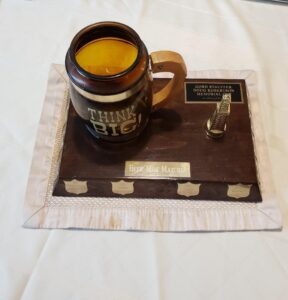
The decals on the trophy identify the winners, which are:
Dirty Dozen (internal)
2002 Gord’s Gladiators/Wayne’s Warriors (tie)
2003 Gord’s Gladiators
2004 Gord’s Gladiators
2005 Wayne’s Warriors
Dirty Dozen/ Pacesetters
2006 Doug’s Pacesetters
2007 Doug’s Pacesetters
2008 Doug’s Pacesetters
2009 Doug’s Pacesetters
2010 Doug’s Pacesetters
2011 Dirty Dozen
2012-2018 No competition
2019 Byron’s Pacesetters
2019 Pacesetters Beer Mug (Ryder Cup) Players:
Note: Those identified with * were brought into the group for the 2019 competition.
Byron Birch Captain
Alistair Barclay Assistant Captain
Dave Chapman
Rick Haas *
Dave McNally *
Joe Trudeau
Jason McKay *
Reg Maye Sr *
Bob Orr
Pete Vantriet
Ron Dunne
Keith Kowalski
As Byron put it in an email on Aug 26 to the Pacesetters after the 2019 competition.
“Congratulations to all of you Pacesetters!
We were able to squeak by with a win over the Dirty (New) Dozen by two points after 3 days of friendly competition. Congratulations to Ron McLaren and his players also. They are a fine bunch. We can all think of shots missed/made by any of the players which would have determined a rather different result.
Anyway, I am very proud of our team effort and the Beer Mug trophy now has a place of honor in my family room. I guess time will tell when it may be up for competition again.
Thank you Alistair for acting as Assistant Team Captain and looking after the money.
And thanks to all of you for participating - it was a lot of fun and a chance to play guys with whom we do not normally get a chance to trade shots (not just golf shots either).
Thanks again to Ron McLaren for the outstanding job in organizing tee times, 19th hole, beer, food, etc. Much appreciated.
Gord Stauffer and Doug Robertson would have been proud of all of us.
Byron”
The Pacesetters have evolved over the years and exact times of various people joining and leaving the group have been lost in the sands of time. However, the players who at one time or other played with the group have been “immortalized” on the bench which is situated on the lawn in front of the Pro Shop. Many are still playing regularly at TVGC. Deceased members at time of writing (Oct 2020) are:
Doug Robertson (2015)
Bill Holt (2013)
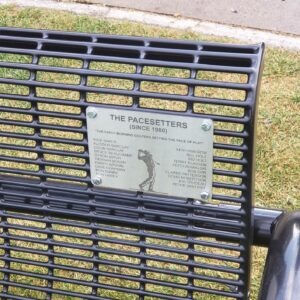
The members all have fond memories of their play at TVGC. Many have given back to the Club by volunteering to assist with Marshalling the 13th Hole at the Shaw Charity Classic (Senior PGA Tour) since its inception. This gave the volunteers the opportunity, particularly at the Pro-Am portion, of almost literally rubbing shoulders with the likes of Fred Couples, Colin Montgomerie, Bernard Langer, John Daly, Scott McCarron, Carlos Franco, Jeff Maggert, and many others. We learned that some were great gentlemen, others not so much. Byron and Dave can tell you of interesting conversations with Colin Montgomerie on the Tee box. Others can tell you of exchanges with Fred Couples.
Several also, notably Dave Chapman, Kenny Haworth, and Byron Birch, particularly in the Covid-19 era, with limited C & G staffing, knowing that the Club has meant so much to them, have given back by assisting in clean up the Course by removing of dead trees, and trimming of lower level Spruce tree branches. This has included others who were not Pacesetters per se, namely Dan Fredrick, and Rick Haas.
The Pacesetters are not the only volunteers, many more members have given back as well, all to make a better Club.
Long may TVGC thrive and stay on this planet! I believe it and other Golf Courses have been a Godsend in this Covid-19 era in the 2020 season and contributed much to maintaining our physical and more importantly our mental health.
Golf in My Early Years
Ron McLaren (2009)
Golf was much different in the ‘50s and ‘60s.
To begin with, no one made tee times. Plans were made amongst friends and competitors, everyone arrived at the Club and then the players proceeded to the first tee. If no one was there you teed off or you identified you were ready and teed off in order of arrival. Eventually, to minimize the potential for confusion a 'slanted pipe’ was installed. Balls went in one end and your tee spot was when your group’s ball made it to the opening at the other end.
Tee boxes were exactly that. Teeing areas were not grass but were constructed out of concrete, rubber and coconut mat. This minimized the maintenance, which was very important in those days.
Many of the fairways are still the fairways we played on the original nine-hole course. The fairways were watered by Mother Nature, and Mother Nature only. In the spring they would often be wet because there was no drainage in those days. The grass was not as full and lush as we have today. Often the lies were not exceptional and many times winter rules were played throughout the year.
As summer arrived, things began to dry out. Often very dry! The green fairways of spring often gave way to the brown fairways of summer. In dry years grasshoppers could be found. In wet years hordes of mosquitoes met you as you walked along the course.
As a boy I recall taking off my running (not golfing) shoes after a round of golf to find the bright white socks I had started with were almost black with dust from the trek around the course. The fairways were usually very generous and the rough and tree areas really came into play on a few holes.
The rough was essentially a natural area that surrounded the fairways. Not defined, not maintained. Some areas, wet years could be very difficult. Other years, not so much. The treed areas were equally natural areas. Hit it into the brush or trees and be prepared for little or no shot at getting out.
There were few sand bunkers on the original course. Again little or no maintenance on these made them truly hazards. The lack of sand traps and the difference in green structure demanded a different style of play. The chip and run was the norm. Being handy with a 7-iron was as important as the wedge is today. The course had only one water hazard. It is the same water hazard we have on #14 today although it was smaller and slightly different shaped.
A major difference in the golf course was the sand greens. Sand was not uncommon in that timeframe due to the cost and maintenance required for grass greens. The sand was actually sand mixed with oil to give it a firmer surface for putting. The greens were very small and generally circular in shape.
Once everyone was on the green the putting ritual would start. Often coconut mats were used to smooth the surface. Putting would then occur frequently with a stroke as firm as a long chip would be today. Footprints needed to be carefully considered as players putted the ball toward the metal cups imbedded into the surface.
As I was growing up an innovation was brought into play. A metal bar with round pipe-like surface made putting a little easier. The heavy metal bar was used to create a path from the ball to the hole. You marked your ball off to the side, the bar path was made and then you then placed the ball in the middle of the path and putted it toward the hole. Other balls near that path would often be moved over to minimize the time.
Putts were often very straight; however the cup was not too forgiving. Sometimes an off line put might deflect off of the 'edge' of the path back at and into the hole. You wanted to be the person matting or using the 'bar' as it allowed you to manage the surface by letting up a little past the hole (if you wanted to keep firm putts a little closer should they miss the hole). Once putting was complete the player would quickly mat the green for the next group. As you can imagine, one often left the course with a little bit of an oily/ dirty feel that needed to be washed off in the clubhouse following the round.
Then there was the Gas Plant. It was always a visual image in the background. But back when the plant was operating, there was the smell. Having been brought up in Black Diamond, I think the sulphur smell was at least somewhat normal to us, however on certain days at the course when the wind blew from the west it hit you.
As a young boy (late 60's), I remember making plans with my friend Rick Stauffer to meet at the golf club. Neither of us had a ride. Rick would start from Turner Valley on foot across the Swinging Bridge, which was located west of the current 14th tee, then up the hill to the Club. I started on foot from Black Diamond through a 'shortcut’ that took me down an abandoned road, through a forested area to meet Rick on the first tee. This was indeed a simpler time. Rick and I would play #1, #2 and #3 (now 10, 11 and 12). If it wasn't going well, it was then back to #1 for a restart! Try that at our busy course today.
My Years on the Board
By Ron McLaren (2009)
I believe it was the fall of 1976, when a group of my golfing buddies and myself made the fateful decision to run for the Board of Directors. Wally McNeil, Gary Hart, Gord Stauffer, and a couple others and myself, were becoming more involved in the Club. Being relatively young, and avid golfers, we saw the potential of the Club, and had to move it forward.
Previous Board’s had made significant improvements. The course had expanded to 18 holes and small grass greens had been built and the clubhouse was excellent for the period. We owed the previous executive’s and members a large debt of thanks for that.
However, it was still basically more a social club with a golf course rather than a top-notch golfing facility. We could see the changes that needed to be made, and we could see that based on the current direction it wasn't going to get there; at least not any time soon.
We knew we would need to work inside the system; however, we would need to have the influence and decision power required. Having one or two of us on the Board wasn't going to work. The current Board had a different agenda and a couple of new faces would be lost, lone wolves so to speak, unable to initiate change. In those years the entire Board was up for re-election each year. If we could get enough votes at the Annual Meeting, we could form half of the Board and have a significant say in the direction of the Club.
The decision was made then to essentially 'hi-jack' the Annual Meeting, by ensuring all who would support us were in attendance and get a group elected. It would need to be kept as silent as possible and we would need to hope for low attendance that was almost always the case anyway. As luck would have it, the plan worked as we had thought and at the end of that election, the seeds of a new direction for the Club were set.
Our group looked at the facility from a golf perspective. We knew that the course layout lacked the polish and challenge required to become a truly respected course in the area. We knew the green structures needed to be changed and the greens enlarged. We knew the course needed a modern and effective water system. We had lots of ideas and plans; we just needed to find ways of moving forward.
Fortunately we didn't alienate other directors. In fact we were fortunate to be joined by several who were prepared to listen to us. While some meetings were uneasy, we knew it was important to learn how things operated from the inside before we could understand how to validate the changes we wanted to see.
I resolved very early to try to chair every committee. That way I would fully see how it all worked. It was a great decision and I believe in my years on the Board, I accomplished that goal.
The first year, I chaired the Golf Committee. It was a far different chair than it is today The Committee ran the Club competitions including the flights, Club tournaments and the Open. They scheduled the event, put out the posters, took the entries, purchased the prizes, set up the tournament structure, assigned the tee times, collected the entry fees, gathered the cards, scored the event, set up the prize table, gave out the prizes, cleaned up after the event, and reported to the Board on the success of the event. It was a lot of work but great fun. It was a way to get to know the majority of members (or at least the few I didn't already know at that time). Committee members, helpers and of course spouses worked hard and made each event successful and a fun time.
I am also proud of the time I spent on the Membership Committee. It had become apparent to me that while the Articles of Association took care of a certain amount of the business of the Club, that other areas were only loosely documented. The Club was growing and it was important that members have access to the Board policies and procedures, which guided their conduct as members of the Club. It was also important for potential members to understand the rules and policies which would guide them should they decide to join. With this in mind, I began to research and document these policies and procedures. They are now arranged in a manual which, while it has been altered as required throughout the years, has been a great tool for the Club and its members to ensure that everyone understands the rights and obligations of being a member of our Club.
Gary and Gordie took a greater interest in the course development aspects. Working with Jack Bowman and others, the development of the required on course developments began to appear over the next few years.
Over the years Board members came and went, but it was evident we had started the Club on a direction to becoming one of the most successful and respected courses in the area. The following is a partial list of things that occurred and that I participated in, during my years on the Board:
1. Introduced professional management to the Club in hiring of both a club manager and a trained course superintendent.
2. Redesigned the existing golf course. We updated it to the point that it was considered a challenge to all.
3. Rebuilt the majority of the greens to a professional standard.
4. Installed a modern, effective water system to allow the course to flourish.
5. Updated the Articles of Association of the Club to a standard, which allowed for successful operation of the Club.
6. Produced the first Membership Handbook.
7. Built the driving range facility at the Club.
8. Purchased several adjacent pieces of land including the 109 acre Van Loon purchase (east of Club including driving range), the purchase of the TurVal Property (hillside between #12 and #13), purchase of additional land from Gulf Oil (west side of #14), purchase and closure of road allowance between driving range and club (down to river), purchase of Warren Cooper property (10th green).
9. Construction of the existing power cart shed.
10. Restructured the financial and accounting system to a professional standard to meet the growing financial requirements of the Club.
11. Created a Policy and Procedures Manual to guide the conduct of management and employees of the Club.
12. Created a multi-year budgeting process to better assess the needs and requirements of the Club.
13. Began the purchase and rental of power carts by the Club.
14. Redesign of the clubhouse grounds including provision of additional parking and the development of the existing putting green.
15. Establishment of an extensive tree planting plan to improve shaping of holes and replace dying trees and allow for the removal of brush from some areas.
16. Procurement of water rights from the Sheep River ensuring water needs in both wet and dry years.
17. Reestablishment of Oldtimer's Tournament which eventually evolved into the Oilfields Open.
18. Introduction of the Classic Golf Tournament. A premier golf event which for several years brought the top amateur golfers throughout the Province to our club for a two-day event. This created a profile for the Club as a top rural golfing facility.
19. Development of the 'Graduating Junior' program, which ensured, junior players from the Club would have a great chance to become full members as they entered adulthood.
20. Development of the 'Special Associate' program which not only allowed aspiring members to test membership but also gave members who might for medical or job reasons not be able to join an opportunity to retain membership without impacting other members.
By the mid-‘80s it was apparent to me that I neither had the time, nor the will, to remain, and that there was a new group of directors who could carry on the work required. In my opinion, the course had firmly been set and the Club would move forward with or without my assistance.
Looking back, I am not sure in 1976 I had as much respect for the prior directors of our club, as I now have, more than 30 years later. While I am sure we made the right decision that year, it is clear to me that the vast majority of members who serve do so for the betterment of the Club. Youthful enthusiasm is important, but experience and good judgement are equally important.
I learned a lot over my years on the Board. I also worked with a set of directors whose dedication and perseverance were exceptional. Some remain members today. Others such as Roger Bauche, who was very responsible for the development of the financial improvements and upgrades, are gone and others such as Charlie Gratama, Jack Bowman, and Herb Hanson have passed.
POSTSCRIPT
Final Thoughts from a TVG&CC 'Life-er'
Ron McLaren
When I reflect on what has happened from the inception of the Club, I can't help but think of the many people who worked hard to make our Club the place it is today. Many of those names are lost in the mists of time. Most members will never know what their contributions were, or the sacrifices they made.
Luckily, I have been, and continue to be part of it, and for that I am grateful. I never tire of seeing the smiles on the faces of those who participate in tournaments, leagues, fun nights, and a multitude of other events. This is, and will always be, evidence our direction continues to be very positive.
I believe the Turner Valley Golf Course is destined to continue to change, grow, improve and prosper. Why? Because our history has shown we attract the right people, when they are needed. I cannot personally speak for the ‘30s, the ‘40s or the ‘50s, but I know they must have been there. I can speak for the last 50 years, and I know from Tom Brown to Herb Hanson to Jack Bowman to Dave Mulder, they always have. That is the type of people we attract, and will continue to attract. I hope I have been a positive piece of that, and hope to be part of it, for as long as I possibly can.
I am one of those individuals that believe knowing your history is important. It provides perspective to where you are today, how you got there, and how you need to move in the future. History, however, does not stop here or today. History continues. It is therefore important that we continue to document and record our progress. This document is meant to be a 'living history.' As such it is important the document be updated and open for new information as time goes by.
Acknowledgements
Special thanks to Gord Stauffer, Dennis Hayden (deceased), Tom Brown (deceased), and Jean McLeod (deceased) for their contributions. I have reviewed and researched where possible. The book 'In The Light of the Flares' which documents the history of the Turner Valley/Black Diamond area helped in that regard. Within the pages of that book were many characters who also were important to our Club. Unfortunately, many of those stories will forever be lost in the mists of time.


